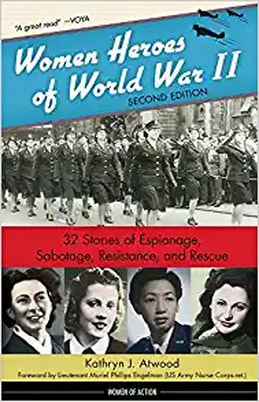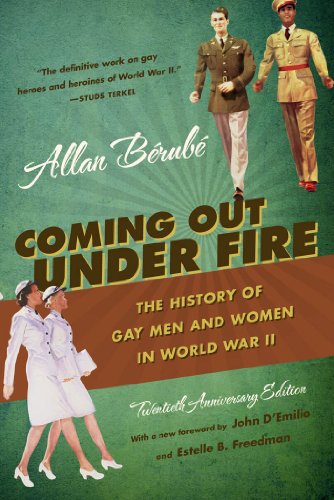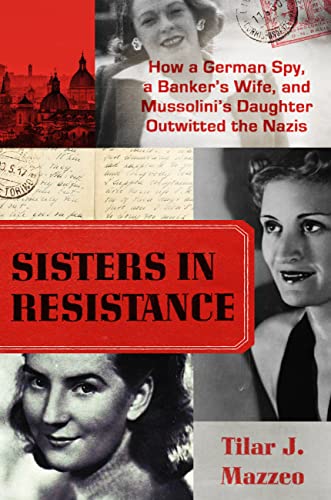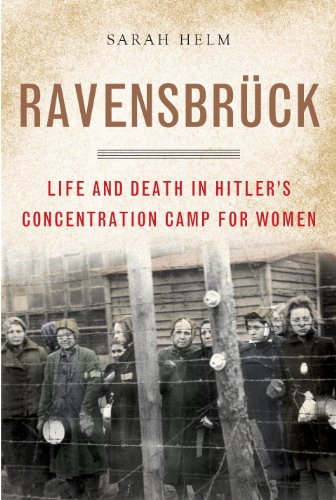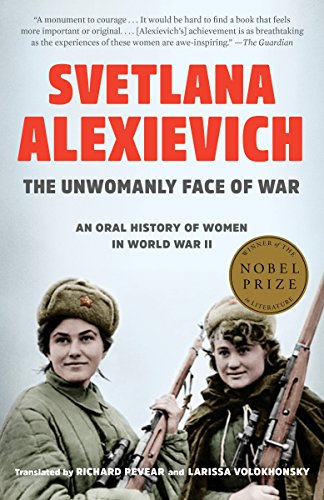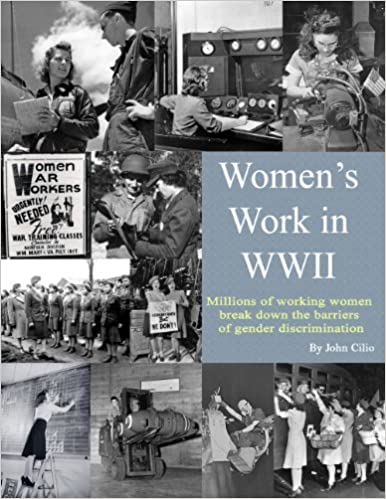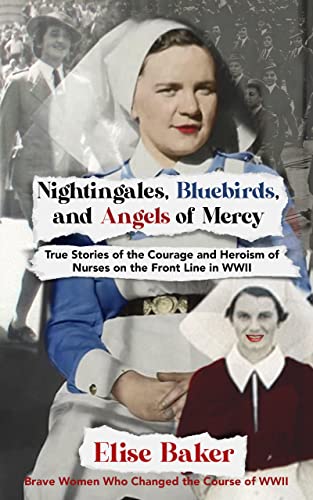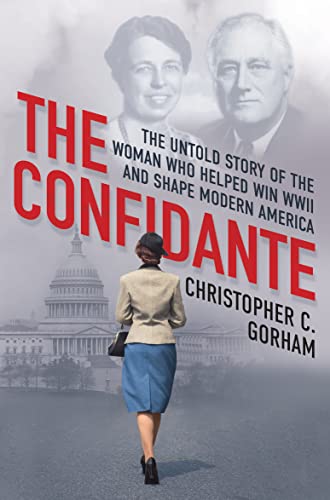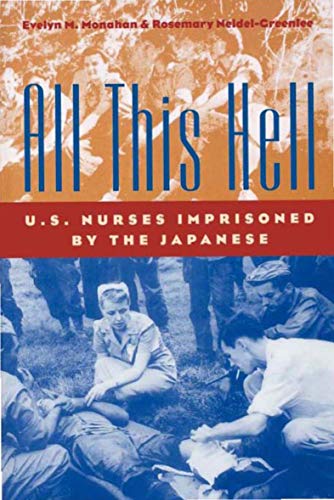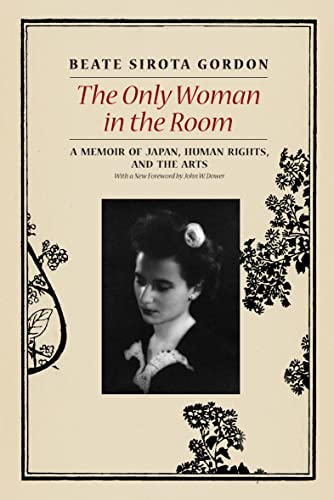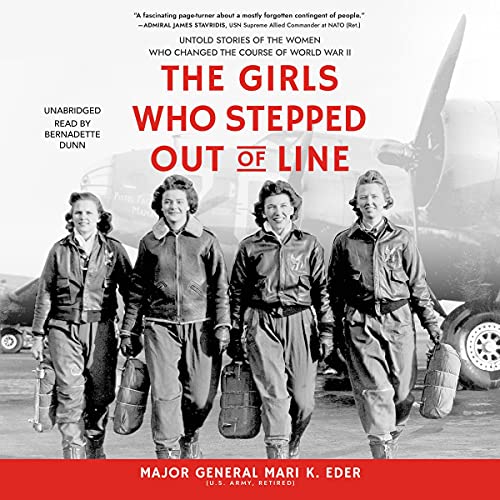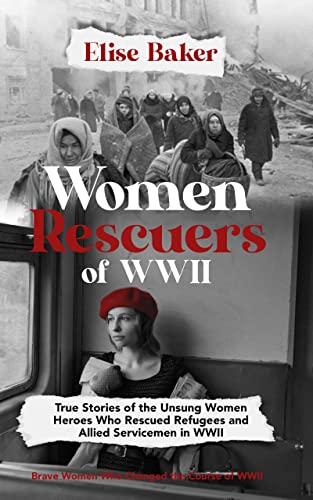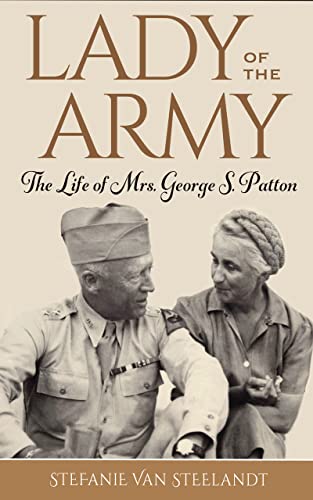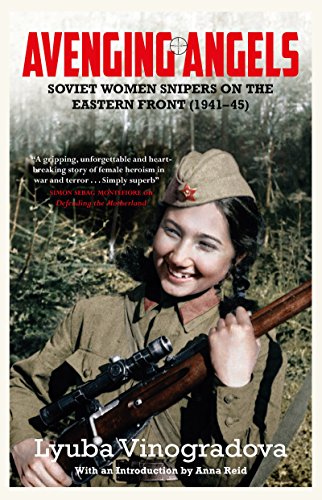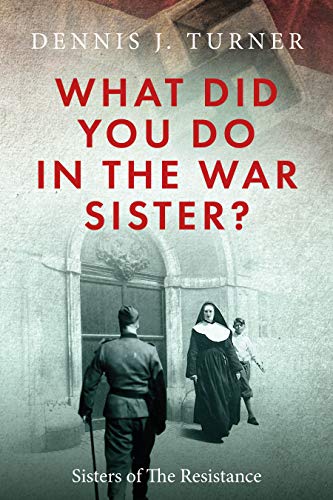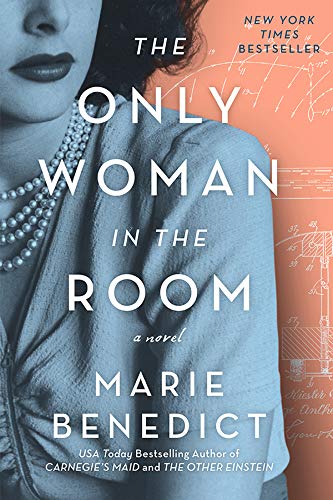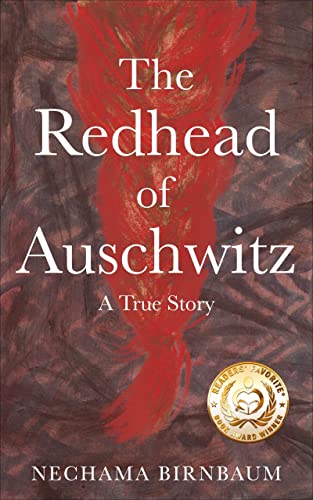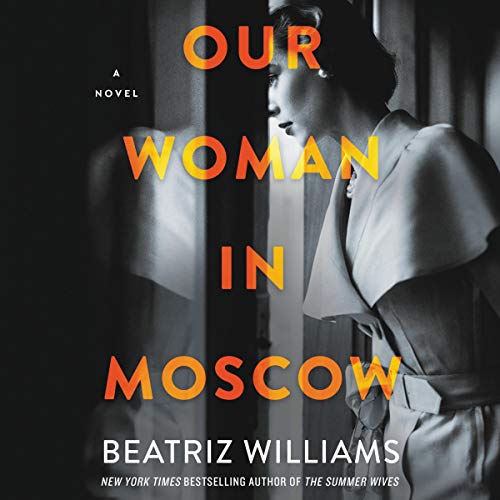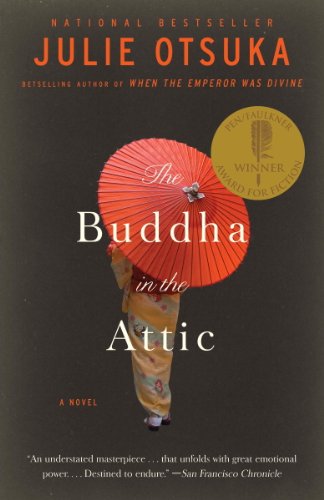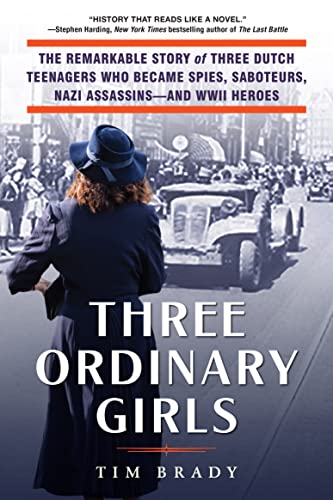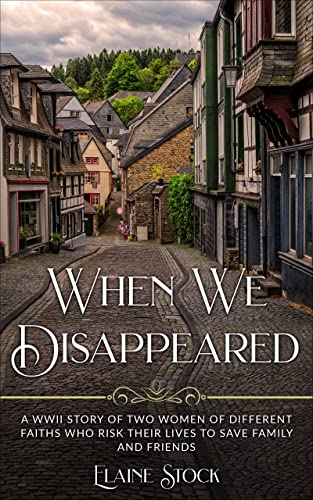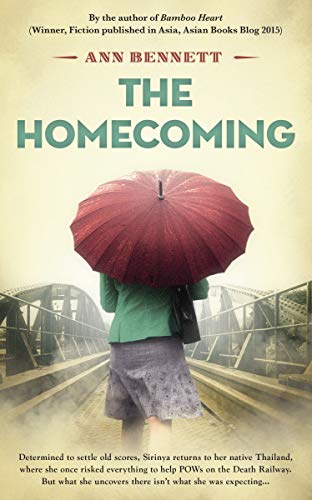27. 1930-1950 Women AND GLOBAL WAR
|
Between 1939 and 1950, the world was again at war. World War II transformed women's lives around the world and left their roles forever changed. Women were re-mobilized for war and their anti-war advocacy became even more entrenched. The post war world saw more women in power, and greater emphasis on peace and universal human rights.
Trigger warning for sexual assault. |
World War I was meant to be the war to “end all wars,” but obviously such was not the case. The moment the First World War ended, the Second was on the horizon. Women worked to prevent war through peace efforts, while others worked to rearm, rebuild, and prepare for revenge. When war finally reared its head, women again served their nations at unprecedented scales, building on the role they played in the first war. From Japan, to the US, to India, to Europe and North Africa, women everywhere were drawn into the conflict.
Women served in war as they had before, but this time in greater numbers and with even more access to the front. Women served behind the lines, worked in the resistance, fought as soldiers and pilots, and were victims of war. Everywhere the war touched, women were also victims and surviors of sexual assault and rape. Trigger warning: this chapter will discuss the rape of women in war. While it is hard to talk about, it is important to understand the particularly vulnerable positions civilians are in during war and to understand it on a human level so that history does not repeat itself. World War II is a dark subject for everyone, including women.
Pacifism
In Europe, World War II was building the moment World War I ended. A major cause of the war was the resolution to the first, in which British and French governments sought to punish Germany by placing heaving payments, seizing German colonies, and pushing back German boundaries. The Treaty of Versailles forced German people into poverty while the Kaiser and his family lived in relative luxury. It installed a weak and unpopular democratic government and built resentment in the German people.
Pacifist women who had begun their efforts in World War I worked tirelessly in the two decades between the wars to prevent the next. In 1919, the International Committee of Women for Permanent Peace changed its name to the Women's International League for Peace and Freedom (WILPF) and relocated its central office to Geneva, near the League of Nations. Between the wars American Emily Greene Balch, a former Welsley Professor of Economics, became the leader and worked without pay to the organization's ends. She received the Nobel Peace Prize in 1946 for her work to promote peace and reconciliation.
In the years between the wars, French pacifist Jeanne Mélin, who had been active in World War I moved toward a more radical pacifism. Her goal was to prevent war and international cooperation in order to democratically resolve issues. Mélin became active in international relations, exchanging almost 1,000 letters with like minded women from around the world including: Gabrielle Duchêne, Louise Bodin, Jane Addams, Chrystal MacMillan, and even German leaders: Gertrud Baer and Lida Gustava Heymann.
The peace organization (Ligue international des femmes pour la paix et la liberté or LIFPL) to which Mélin belonged, was seen by people at the time as a distraction from the hard issues of the time or worse, the product of the weaker sex, but their efforts would have lasting impacts beyond the war, laying the groundwork for the international cooperation that followed. Mélin refused to accept the Treaty of Versailles, and particularly the theory of German culpability. She increased her symbolic and media-related activities in support of Franco-German reconciliation. At a peace conference in Zurich in 1919, she is remembered for shaking the hand of the German delegate Lida Gustava Heymann. In her speech, she refused to condone France humiliating Germany by way of the peace treaties. She proclaimed herself a sister of these women who, like herself, had fought so strongly against imperialism and militarism. Mélin traveled widely in Europe on behalf of the LIFPL.
Women Peace activists were widely engaged during this period, but were often operating outside positions of power and many countries were taking the position of neutrality rather than actions that could potentially avoid war, which made peace initiatives difficult, if not impossible. In 1922, a delegation from the Messagères de la Paix, comprising Jane Addams, Catherine Marshall, and Jeanne Mélin, won the support of the Scandinavian countries against French occupation of former German territories. Unfortunately, because those countries had declared neutrality, they were unable to take any steps that would put pressure on France. And since they operated outside of power, the almost entirely male French and British governments refused to receive them. When the women proposed reasonable changes to the League of Nation’s constitution, which would improve cooperation, they were ignored. Other women’s peace groups wanted the League of Nations to be replaced by an international society of nations advocating sex equality, the economic independence of women, the equal sharing of wealth and respect for minorities.
The international feminist pacifist movement was really active in the mid-1920s hosting conferences to dispel myths propagated by national governments. Jeanne Mélin took part in a parade for peace on Armistice Day (the day peace was established in World War I) in 1931. The march brought together 19 different societies working for peace, crossed Paris by bus, and was marked by two symbolic arrests, one at the Etoile on the tomb of the Unknown Soldier and another at the foot of the Eiffel Tower.
As things heated up and tensions were mounting in Europe, these women peace activists showed just how far ahead of their time they were. Jeanne Mélin sent a manifesto to the German people proposing a European economic federation, an idea that would not be realized for decades. In 1935 she took part in a number of meetings held by the world committee of Women against War and Fascism, created in 1934 by another French woman, Gabrielle Duchêne. Both were convinced that only a single union of feminists, united by a sense of internationalism, could wage the fight against war. Duchêne continued her work during and after the war. When Nazi’s later invaded France, she was on their list and sought refuge with friends where she helped people escape Europe. After the war she left a momentous archive of documents related to women’s peace and labor union work.
Of course the second world war did happen. In 1957, in her memoirs, Jeanne Mélin bears witness to the desperation and isolation she felt when tackling the subject of the declaration of war. She wrote, “Well at this point, I find it impossible to describe my greatest disappointment… having worked so hard and relentlessly for harmony between nations, for peace and human fraternity, all I could do was stand by impotently as such a worthy ideal collapsed around me”.
Rising Fascism: Germany
The Depression in Germany allowed for extremism to breed and gradually the Nazi party under the charismatic leadership of Adolf Hitler came to power. Their goal was to return the Third Reich, or the third master race (following the Romans and the Prussians) to glory, but that process involved eradicating undesirable elements from society through policy and breeding. Women played a significant role in Hitler’s plan to create an ideal society based on the "Aryan" race although this role was ultimately the submission of women in an ultra masculine society. Hitler praised German women as loyal and devoted supporters of the Nazi movement. He valued them for their activism and also recognized their biological ability to bear children who would contribute to the growth of the race. The Nazis believed that a larger population of pure Aryans would strengthen Germany militarily and provide settlers for conquered lands in eastern Europe. To promote this goal, the Nazi regime encouraged "racially pure" women to have as many children as possible.
The National Socialist Women's Union and the German Women's Agency used Nazi propaganda to emphasize the roles of women as wives and mothers. Besides increasing the population, the regime sought to maintain "racial purity" by passing laws that prohibited marriage between "Aryans" and "non-Aryans" and preventing individuals with disabilities or certain diseases from marrying at all. Well, this sounds like Aryan women were praised, and they were, it was entirely for their reproductive function. Outside of that opportunities, for women in the workplace were rapidly closing. Admissions into institutions of higher learning, licensure, and other measures of social value were deteriorating.
Girls were taught from a young age to embrace their roles as mothers and obedient wives through schools and compulsory membership in the Nazi League of German Girls (Bund Deutscher Mädel; BDM) starting at the age of ten. However, as the Nazis geared up for war, the need for labor forced them to encourage women to enter the workforce. Women were compelled to participate through programs like the Duty Year, which required all women to provide compulsory service, and many even joined the military.
In 1936, the Nazis implemented a state-directed program called Lebensborn (Fount of Life), which aimed to increase the population. Under this program, every SS member was expected to father four children, whether they were married or not. Lebensborn homes were more like state endorsed whore houses for racially pure women. They provided support and assistance to these single mothers and their children, including financial aid and assistance in finding adoptive parents for the children.
The Lebensborn program did exist but was not aggressively promoted, instead, the Nazi population policy focused more on promoting family and marriage. The state encouraged marriage through loans, provided financial support for each new child, publicly recognized families with many children, awarded the Cross of Honor of the German Mother to women with four or more children, and increased penalties for abortion of desired Aryan babies.
Rising Fascism: Japan
Across the world, Japan played a small role in World War I as part of the Allies and in that time continued its militarism and imperial ambitions. As in the Russo-Japanese war, their eyes were set on Manchuria as a start, but their goal, like that of the emerging Nazi’s across the ocean, was nothing short of Asian and Pacific domination.
Part of this was fueled by a distorted view of the world and gender relations. Imperial Army soldiers were critical of the west and modernization, deemed the West the enemy, and worried about society becoming more feminine. They were encouraged through government propaganda and education to be against the "new woman," the women's movement, women entering male jobs, and modern technology that made life easier for both men and women. Soldiers were expected to prioritize loyalty to the Emperor and the nation, not their families or women, which primary source evidence showed was not easy for them. This idea of military masculinity started to dominate children's mass culture too.
At the same time the empire needed women in order to win wars. Women's roles in Japan expanded to support soldiers on the home front, joining women's organizations and performing various duties. The ideals of a "good wife, wise mother" were transformed to include national service. Women became crucial in the war effort, providing comfort and support to soldiers. The Women's National Defense Association played a significant role in promoting defense knowledge and aiding families of soldiers. The association's activities included sending care packages and letters to soldiers, as well as visiting their homes. Membership in these associations became compulsory, or forced like the draft, so millions of women participated. Some women were even willing to cross the ideological border between the home front and the front lines. The survey conducted by Occupation forces after the war found that women, especially young women, showed strong fighting spirit.
The way that women were idealized at home in Japan could not have been more different from how state agencies treated women in conquered Japanese territory. Especially as the war expanded, the rape and assault of local women by Japanese soldiers became a serious issue for the military and the colonial regime. The increasing number of soldiers with venereal diseases tarnished their reputation and the careers of commanders. The military administration believed that the only way to curb the spread of diseases and maintain soldiers' morale was to establish “comfort stations” of sexual slavery throughout the empire. The Japanese military recruited Japanese women, sometimes working in prostitution, under different names, such as the Women's Volunteer Corps and the Patriotic Emperor-Approved Corps, often from poor backgrounds or those who believed they were volunteering for regular work. In reality they were sacrificed for the “good of the nation” in whorehouses on military bases. The system of military sexual slavery became institutionalized as The Comfort Women system. The Japanese forced women primarily from South Korea, but also China, the Philippines and other areas under their control into sexual slavery across the Pacific.
One of most horrific assaults on foreign Asian women came between 1937-1938 during an event known as the Rape of Nanjing. The massacre in Nanjing by the Japanese army resulted in the brutal killing of entire Chines families. The city was left strewn with bodies for months as the Japanese aimed to completely destroy it. Alongside the mass killings, tens of thousands of women, including young girls and elderly women, endured horrifying acts of rape and torture. Eyewitness accounts and subsequent analyses indicate that between 20,000 and 80,000 women suffered brutal sexual assaults, with many of them being mutilated and killed after the attacks, including victims of gang rapes.
The exact death toll of the Nanjing Massacre remains uncertain, with estimates ranging from 200,000 to 300,000 people. Following the war, both General Matsui and Lieutenant Tani Hisao were tried and convicted for war crimes by the International Military Tribunal for the Far East, leading to their subsequent executions.
Fascism is Against Feminism
A tenet of fascist ideology, often under emphasized in history classes, is the promotion of the traditional roles of women. Valuing their roles as mothers who are believed to reproduce a particular kind of nation, and little else, reduced women living under these regimes to brood mares. Therefore, women feminists were targets of fascist regimes. Feminists who had come to support contraception and abortion for women’s bodily autonomy and freedom were a particular target.
Fascist nations under Hitler, Hirohito, and Mussolini played a significant role in controlling women's bodily autonomy by implementing measures such as restricting access to reproductive healthcare and providing incentives for increased reproduction, including financial rewards for having lots of children. In 1930, the Rocco Code was implemented in Italy, which banned abortion and limited women's access to birth control. This law also targeted midwives as a source of information on contraception and abortion services. Women's fertility was treated as a public good owned by the state.
In Nazi Germany, the Nuremberg laws imposed racist distinctions on when abortion is illegal. There were harsher punishments for abortions performed on women classified as Aryan, while abortions on Jewish and other minority groups were encouraged for eugenic reasons. When the Nazi’s took over France they imposed a puppet government known as the Vichy regime. There, abortion was declared a crime against the state in 1942. This law led to the imprisonment of Eugène Humbert and the execution by guillotine of Marie-Louise Giraud in 1943 for being abortion providers.
Women found various ways to collectively push back against the political assault on their bodies. Some pregnant women concealed their pregnancies from employers to avoid restrictive work laws, while others shared recipes containing folk medicine and reproductive health information, expanding access to such knowledge. Rice weeders expressed their resistance through work songs, discussing their struggles and aspirations for personal rights in opposition to the state's agenda.
Midwives even engaged in clandestine actions, stealing forbidden tools to perform private abortions and deliveries. Using women’s bodies and reproductive potential for the good of the state supported the fascist ideas of hierarchies. They viewed their race as superior to other races and aimed to prove that through military might. Women, although part of that race were subjected internally to the gender hierarchy which was male defined and dominated.
USSR
By the 1930s, the Soviet approach to communism was in full swing. Lenin had been replaced by Stalin, and an even harsher version of communism was in place. Ironically, while the USSR violated human rights, it also established greater gender equity in the workforce. The Bolsheviks earlier had sought to transform the family by giving men and women equal rights. Lenin stated ““[The woman] continues to be a domestic slave, because petty housework crushes, strangles, stultifies and degrades her, chains her to the kitchen and the nursery, and she wastes her labor on barbarously unproductive, petty, nerve-racking, stultifying and crushing drudgery.” Stalin continued some of the commitment to women’s rights: the army contained all-female units, and the 1936 Constitution of the Soviet Union stated that “Women in the USSR are accorded equal rights with men in all spheres of economic, state, cultural, social, and political life.” However in practice, Stalin’s Russia did not live up to those goals: women continued to bear the burden of childcare and during the war the ideology of women as “heroines of the home” was inculcated.
While western powers ignored the hostile and expanding fascist states, they also appeared to be blind to Soviet behaviors. In the 1930s, Stalin began imprisoning resistors, mostly men, to the communist regime and sending them to the Gulags, work camps in Siberia. This dislocation, disappearance, and often murder of men left many towns within the Soviet union with a female majority and families run by female matriarchs trying to pick up the pieces. Stalin committed a mass murder known as the Holodomor, which resulted from forced collectivization policies and which caused the deaths of millions, including Ukrainians. Women, deprived on male partners by the Soviets, suffered immeasurable pain and suffering as they struggled to feed their families and save their children in the midst of mass hunger. The west remained ignorant or turned a blind eye to their experiences.
African Women at War
World War Two saw extensive use of rape both as a tactic of war and as a casual expression of misogyny. Examples include the Rape of Nanjing mentioned above, the Rape of Berlin, in which the Russian army raped virtually every woman left in Berlin at the end of the war, rapes and sexual torture in the Holocaust, the sexual slavery of the Comfort Woman system, rapes by Allied soldiers across Europe, and the extensive rape of Ethiopian women by the invading Italian army.
When Italian men marched into Ethiopia in 1936 before the western world was ready to consider the start of World War II, they marched to songs about the sexual things they would do to Ethiopian women when they arrived. Seeing the rape of women as a right of war, indeed perhaps as a male military “rite of passage” has been pervasive in many wars. This was bolstered by the fact that Italian fascism supported gender hierarchy with women subordinate to men.. For Ethiopian women, fighting in WWII was a necessity. Many took up arms to defend their homeland.
The war brought about widespread violence, and Ethiopian women were not spared from its effects. There were documented cases of sexual assault and rape committed by Italian forces against Ethiopian women. These acts of violence had a traumatic and long-lasting impact on the survivors, leaving deep scars on both individual and collective levels.
Ethiopian women actively participated in the resistance against Italian occupation. They played crucial roles in supporting the Ethiopian resistance forces, providing food, shelter, and medical assistance to fighters. Women also acted as messengers, spies, and nurses during the war, making significant contributions to the resistance efforts.
Ethiopian leaders asked Britain and France for support, but they were denied. They warned that the war that was happening in North Africa would soon be in Europe, but leaders were so fearful of another global war they still refused to join the war. The delayed involvement of both the Americans and the British had a profound impact on the lives of women around the world. Whenever an army is invading, there is great risk to the civilian population who are often left behind when the trained men head off to distant front lines.
Outbreak of War
The Italians re-attacked Ethiopia in 1936, which was the only African nation notcolonized by Europe. The Japanese, seeking to expand influence, invaded Manchuria in 1931, and followed this with a formal invasion of China in 1937. The Nazi’s, meanwhile, annexed central European states in the mid-1930s. Western historians, however, point to the Nazi invasion of Poland in 1939 as the start. The United States did not join until Japan attacked Pearl Harbor in late 1940, almost a decade after Japanese violence began the war in Asia.
The Axis powers ran rampant in the early years of the war. Germany quickly overwhelmed much of Western Europe. After signing a nonaggression pact with the Soviet union, Germany invaded Poland from one side, while the Soviets invaded from the other, they turned their eyes on Norway, then they stabbed the Soviets in the back driving deep into Soviet territory. Japan similarly went wild in Korea, Manchuria, China, and Vietnam. Italy went after an old rivalry with Ethiopia, before expanding the war into other parts of North Africa. Each of these nations had superior weaponry, improved military tactics, and the desire for revenge from World War I.
Reinstating Women
When the war erupted, women again found themselves thrust into the fight as they had been in World War I. Nations scrambled to reinstate closed branches of women’s service and get the home front firing at all cylinders. Yet again, millions of women took on the monumental task of nursing the millions of wounded and ill soldiers in thousands of field and local hospitals. They also charged headfirst into the factories. Even the future Queen Elizabeth II, a teenager at the time, became a mechanic during the war.
The sheer scale of this war meant that each country involved was throwing their full voluntary forces’ weight at one another, and most also had to draft men to ensure they could protect themselves from or overcome their enemies. As a result, women of both Axis and Allied countries were needed in the military. This meant that more women were allowed into divisions of the military to take on clerical roles, serve as drivers, mechanics, welders, pilots, plumbers, electricians, and more. While in most cases the military brass basically wrote this off as a necessary measure in order to free men up for the battlefield, it became another opportunity for women around the world to prove themselves in fields typically off-limits to them.
As with World War I, women in most countries were meant to be far from the “action,” though many found themselves there anyway, as they were formed into women’s divisions of various military branches. For example, the British had the Women's Royal Naval Service (WRNS), the Women's Auxiliary Air Force (WAAF) and the Auxiliary Territorial Service (ATS). Other nations had variations on the same branches of service.
During World War II, the Women's Land Army (WLA) played a crucial role in increasing Britain's food production. Prior to the war, Britain relied heavily on imported food. However, the outbreak of war necessitated the cultivation of more land and the production of food domestically. As many male agricultural workers joined the military, women were called upon to form a new workforce in rural areas. Initially, women were asked to volunteer for service in the Land Army. At its highest point in 1944, the WLA comprised over 80,000 women, commonly referred to as "land girls." Land girls took on a wide range of tasks on the land, enduring various weather conditions and working in different parts of the country as directed. They played an essential role in supporting agricultural activities and boosting food production during the war.
It was Soviet women who had the biggest combat presence. Much like in World War I, but to a much larger degree, Soviet women were accepted into combat roles. In part, this was due to the social equality aspects of the communist government. Another crucial factor in Soviet use of women in war was how devastating World War I had been to their population. Russia lost more people than any other nation combined. There simply weren’t enough people to fight a war of this magnitude again without women.
An astonishing 800,000 Russian women would serve in the military during WWII. Not to mention that midway through the war every Russian nurse, half of their doctors and surgeons, and nearly half of their paramedics would be women. 200,000 would be decorated during the war, and 89 would win the Hero of the Soviet Union award, which is the equivalent of the Medal of Honor. This doesn’t even include the women who served in resistance groups behind enemy lines!
Women served in infantry positions, as machine gunners, tank drivers, operated anti-aircraft batteries, and more. Some women showed a real proficiency for war, like Lyudmila Pavlichenko who was one of just over 2,000 Soviet snipers. She earned the nickname “Lady Death” with 309 kills. She became such a symbol of Soviet power that after an injury in the field she was forcefully retired because the Soviet leadership thought that she provided too much positive morale to lose her. Instead, she became a propaganda tool throughout Russia, and was shipped off to America, Canada, and Britain to convince the powers that be to open up a second front in France. When asked by an American reporter why and how she could do this job, she stated quite succinctly, “Every German who remains alive will kill women, children and old folks [...] Dead Germans are harmless. Therefore, if I kill a German, I am saving lives.” In the end, her time of killing was over, but she would return to train the next generation of snipers.
Female pilots, much as they were viewed in other parts of the world, were not considered likely to have a major impact on the war, and thus were given inferior equipment and certainly given inferior respect. Russia’s female fighter pilots had earned their stripes, claiming the only two female fighter aces, but it was their night bombers of the 588th Regiment that claim the real fame. Known as the Night Witches, most were women in their late teens and twenties, including Nadezhda Vasiliyevna Popova who joined the war because her brother was killed in battle. She said, “I saw the German aircraft flying along our roads filled with people who were leaving their homes, firing at them with their machine guns [...] Seeing this gave me feelings inside that made me want to fight them.”
These women were more than willing to fight, but were given, quite literally, the bottom of the barrel for equipment. They got rickety crop dusters that were not considered likely to stand up to any anti-aircraft fire if challenged, had a top speed that was unbearably slow, and no modern technology to speak of. No, these death machines just had a badass pilot and navigator, two small bombs, and just enough fuel to get to the target and back. Hell, they didn’t even get parachutes! Yet, this all-female regiment, from their commanders to their pilots, to their navigators, and even their mechanics, flew nearly 25,000 combat sorties and damaged millions of dollars’ worth of supplies, transportation networks, communication systems, and fuel depots. They were exposed to the elements in the open plane, they were exposed to enemy fire that tore some planes to pieces, and saw 32 of their crew lost to the war, but they also claimed 23 of the total 89 Hero of the Soviet Union titles awarded to women.
Women in the Resistance
When Poland and most of western Europe fell to the Nazi’s, men enlisted in those militaries sat out the war in prisoner of war camps. Left behind were women, children, and elderly people. It was predominantly women who made up the resistance efforts in these places. In Poland, women acted as couriers, delivering information to the ghettos. Many women sought refuge in the forests of eastern Poland and the Soviet Union, where they joined armed partisan units.
Women also made significant contributions to the French Resistance efforts. One notable example is Sophie Scholl, a student at the University of Munich and member of the White Rose resistance group, who was arrested and executed for distributing anti-Nazi leaflets.
Virginia d'Albert Lake, an American who married a Frenchman, was active on the Comet Line, which helped downed Allied pilots get to independent Spain from inside occupied France. Together with her husband Philippe, she assisted 67 airmen in evading capture by the Germans through the Comet Escape Line. The d'Albert Lakes used their country house and connections to provide safe houses for escaping airmen, offering them shelter and assistance. Virginia's primary responsibility was meeting these airmen in Paris train stations and housing them until they could continue their journey towards Spain. As Allied bombings disrupted transportation, the couple shifted their focus to sheltering airmen in the Fréteval forest.
However, on June 12, 1944, Virginia was spotted by the Gestapo. She was carrying a list of contacts in Châteaudun, which she tore up and swallowed to protect her network. She was imprisoned initially near Paris and later sent to Ravensbrück concentration camp and other camps. Despite her challenging circumstances, Virginia's treatment was somewhat better than other prisoners due to her nationality. She worked in the prison kitchen and experienced improved conditions as the war neared its end.
Additionally, many women actively engaged in aiding and rescuing Jews in German-occupied Europe. Noteworthy individuals include Jewish parachutist Hannah Szenes, who conducted a daring mission by parachuting into Hungary, and Zionist activist Gisi Fleischmann, who led the Working Group within the Jewish council in Bratislava, attempting to halt the deportations of Jews from Slovakia.
Although a minority, some Catholic nuns heroically saved hundreds of Jewish children during the war. The "free zone" in the southern part of France did not uphold its name as it failed to provide safety for Jews. The Vichy government enacted anti-Jewish laws, permitted the internment of Jews from Baden and Alsace Lorraine within its territory, and confiscated Jewish possessions, just like the Nazis.
On August 23, 1942, Archbishop Jules-Geraud Saliège of Toulouse urged his clergy to support Jews and that Jews were part of the human race and that a Christian should not forget this fact. Saliège was one of the few voices of protest against the Vichy authorities' policies. Sister Denise Bergon, the young mother superior of the Convent of Notre Dame de Massip, located northeast of Toulouse, was deeply moved by Saliège's message. She saw it as a call to action that transcended religious, racial, and political boundaries. At her convent, she took in Jewish children who were hiding from the intensifying round-ups of Jews carried out by German troops and, later, by the Milice fascist militia. By winter 1942, the number of Jewish children seeking refuge within the convent grew to 83. Sister Denise, with the support of the Resistance, ensured their safety through various means, including hiding them in secret locations within the convent.
The children were sheltered amidst constant danger, with Sister Denise and her fellow nuns going to great lengths to protect them. Despite the risks, the convent managed to keep the children hidden and provide for them. Sister Denise's dedication and bravery allowed the Jewish children to survive the war, even though many of their family members were not as fortunate.
In Poland, across over 200 religious institutions, nearly 1200 Jewish children were sheltered from the Nazi regime by Catholic nuns. The Danish people helped nearly their entire Jewish population to escape the country under the nose of Nazi occupation. When Mrs. Aage Bertelsen was asked by the Nazi occupiers if she had helped in the operation she unapologetically said, “Of course [...] All decent people did. Because of sympathy with poor, persecuted people, who came to us confidently placing their lives and fates in our hands.”
Holocaust
During the Nazi regime, Jewish, homosexual, disabled, and many other women and men were targets for Nazi persecution and death. Women faced brutal treatment in ghettos and concentration camps, with some forms of persecution specifically aimed at women. What started as oppressive systems that stripped people of their teaching, law, medical, and other licenses and forced them to surrender their businesses and homes to the state turned into the “Final Solution,” whereby the Nazi’s built gas chambers to execute “undesirable” populations in mass.
Perhaps the most well known woman from the Holocaust was a girl: Anne Frank. Frank was a Jewish girl who gained international recognition posthumously when her father published her diary, which she wrote while in hiding during the Nazi occupation of the Netherlands in World War II. Tragically, in August 1944, the hiding place was discovered by the Nazis, and the occupants, including Anne and her family, were arrested. Anne and her sister Margot were eventually transported to the Bergen-Belsen concentration camp, where they both died of typhus in early 1945, just a few weeks before the camp's liberation.
German authorities subjected women to forced labor, sterilization experiments, beatings, rape, and other forms of abuse. Women formed mutual assistance groups to survive, and some participated in resistance activities against the Nazis. Haika Grosman, for instance, played a pivotal role as one of the organizers of the Bialystok ghetto underground and participated in the Bialystok ghetto revolt. Several Jewish women supplied the gunpowder used by Jewish resistors to detonate a gas chamber during a 1944 uprising, resulting in the deaths of several SS men.
Certain camps were designated for female prisoners, such as Ravensbrück. Most of the prisoners there, around 5,000 women, were considered “asocial”: homeless women, “criminals,” and poor women who had taken up prostitution to survive the war. Anyone suspected of having a venereal disease, or sexually transmitted disease, could end up at Ravensbruck for being a sexworker. There women were subjected to medical experiments by Nazi doctors that were supposed to help the war effort by uncovering treatments for German soldiers like hypothermia, infections, and more. These experiments were performed without the patients consent and were a form of torture for the women who endured them. In the years after the war, many Nazi leaders tried to claim that they were just following orders, but in Oberheuser’s case, there is little evidence of this as orders were scarce, and in many cases direct orders were modified by Nazi staff at the camp.
Herta Oberheuser worked at Ravensbrück concentration camp. She voluntarily went to work at Ravensbrück to advance her career and improve her financial situation. She obtained her medical degree in 1937 and specialized in dermatology. Responding to a newspaper advertisement, Oberheuser joined Ravensbrück in 1940, considering it her "life's work." Oberheuser enthusiastically performed these cruel experiments on the female prisoners.
Oberheuser conducted humiliating gynecological examinations as the women arrived at Ravensbruck. Pregnancy checks were part of the examinations conducted at Ravensbrück concentration camp. Many prisoners arrived at the camp already pregnant. In the early years, they were sent to give birth in a nearby town, while their babies were forcibly removed from them and placed in children's homes to be raised by Aryan families. However, starting from 1942, babies were born in Ravensbrück but were mostly killed shortly after birth. Forced abortions were also performed on inmates, with written orders from Berlin. The camp doctors, including Rolf Rosenthal, experimented with different abortion procedures and stages of pregnancy. Other individuals like Gerda Quernheim and Percy Treite were involved in assisting or performing these forced abortions as well. Around 560 children were born in Ravensbrück in the final year of the war. Most likely starved to death with 293 recorded as dead with no cause listed, but the figures are probably higher. Women who were identified as Jewish and found to be pregnant were sent directly to Auschwitz to die.
Auschwitz is probably the most well known concentration camp: a place of death. But it was also a place where life emerged, thanks to Stanislawa Leszczyńska. Leszczyńska's and her family joined the Polish resistance after the Nazi invasion in 1939, smuggling supplies and false documents to Jews in the ghetto. In 1943, their activities were uncovered, leading to their capture by the Gestapo, a Nazi secret police force. While her husband and eldest son managed to escape, Leszczyńska and her younger children were arrested. Sent to Auschwitz with her daughter, she was separated from her sons and faced unimaginable challenges in the camp.
As a midwife, Leszczyńska was assigned to the maternity ward, which was more of a place of death than care. Leszczyńska refused to comply with orders to kill babies. Despite the dire conditions and constant threats, she delivered around 3,000 babies during her two-year internment. Her courage and compassion provided a glimmer of hope in the midst of a living hell and she was remembered by Auschwitz survivors long after the war.
Clandestine Work
Across the British Channel, Bletchley Park, a British codebreaking center during World War II, owes its success to thousands of remarkable women. This remote manor served as the hub for breaking Axis military codes, such as the supposedly unbreakable Enigma ciphers. Women from diverse backgrounds came to Bletchley Park to contribute to the codebreaking efforts, and by 1944, they outnumbered men three to one.
The women at Bletchley Park held various roles. Mavis Lever and her team "Dilly's Fillies" cracked the Italian naval Enigma cipher, contributing to a major naval victory. Betty Gilbert, a Y-Station listener, played a vital role by recording Morse Code ciphers for decryption. Joan Clarke, a mathematics genius and friend of Alan Turing, led a team breaking German naval ciphers. Ruth Bourne operated the noisy bombe machines that expedited codebreaking. Osla Benning, a translator, decoded messages from German to English, including crucial wartime information.
Though leadership opportunities were limited, women excelled in their roles. Bletchley Park provided an open-minded and equal environment, especially for neurodivergent women. Despite their significant contributions, female achievements remain overshadowed by male codebreakers like Turing and Welchman. "The Rose Code" aims to bring the stories of these remarkable women to the forefront, celebrating their intelligence, friendship, and the inclusive environment at Bletchley Park.
Vera Atkins was a British intelligence officer who played a significant role in the Special Operations Executive (SOE) during World War II. Born on June 16, 1908, in Romania, she later moved to England and became a naturalized British citizen. Known for her exceptional organizational skills and dedication, Atkins became the intelligence officer in charge of the SOE's French Section. Atkins was responsible for recruiting, training, and deploying agents, mostly women, into occupied France. She personally interviewed and selected candidates, assessing their suitability for covert operations and resistance work. She maintained contact with agents in the field, providing support, guidance, and intelligence. She also played a crucial role in coordinating and overseeing sabotage activities, subversion, and intelligence gathering in France.
The official mission of the Special Operations Executive (SOE) during World War II was to deploy Allied special agents on the ground to coordinate, inspire, control, and assist oppressed nations' nationals. The SOE adopted irregular warfare tactics employed by the Irish Republican Army, training their agents, known as the "Baker Street Irregulars," in sabotage, small arms, communication, and combat skills. Fluency in the local language was essential for seamless integration into the society, as arousing suspicion could jeopardize their missions. The agents underwent extensive training to resist interrogation and evade capture, aware of the imminent danger posed by the Gestapo. Irregular missions demanded specialized equipment, and the SOE's Operations and Research section developed innovative devices for sabotage and close-range combat, such as exploding pens and concealed weapons.
Communication devices were crucial to maintain contact with the French resistance and the outside world, with radio operators carrying their equipment on their backs while staying mobile. Women played a vital role in the SOE as couriers, spies, saboteurs, and radio operators. Despite initial reluctance, they proved indispensable due to their advantages in travel freedom and the protection of gender stereotypes, which kept them above suspicion.
Notable female agents included Nancy Grace August Wake, known as "the white mouse" for her remarkable ability to evade capture, and Odette Hallowes, who survived two years in prison at Ravensbrück. Unfortunately, others faced tragic fates, such as Noor Inayat Khan, betrayed and executed in Dachau, and Violette Szabo, who met a similar end in Ravensbrück. Sansom, Szabo, and Khan, were posthumously awarded the George Cross, Britain's highest civilian bravery award.
Violette Szabo’s (née Bushell) story is particularly striking, because she was the widowed mom of a daughter who never got to meet her father. Szabo’s husband, Etienne, died in North Africa during the war. She left her daughter with relatives to go after the Nazi’s whom she blamed for killing her husband. She grew up in London, initially living with her maternal aunt in France during the Great Depression. She had a tomboyish character, and was fluent in both English and French. Initially during WWII she joined the Women's Land Army and later the Auxiliary Territorial Service (ATS). After Etienne died, in the midst of rearing an infant, she joined the SEO.
Her first mission involved a role as a courier and wireless operator in France. She successfully gathered intelligence, and after a brief return to England, she was sent on her second mission. Atkin’s choice to send her was interesting, because Szabo’s young daughter was no secret, she even came to headquarters with Szabo at one point. On the second mission she was captured by German forces while coordinating Resistance activities. She was raped and tortured by Nazis while in prison and eventually sent to Ravensbrück concentration camp. Despite harsh conditions and forced labor she maintained her spirit, aiding fellow detainees and even planning escape attempts.
Despite the reality that war would end soon, around February 5, 1945, she was executed at Ravensbrück, marking the tragic end to her valiant efforts as an SOE agent. After the war, on January 28, 1947, Tania, her four-year-old daughter, was presented with Violette's George Cross by King George VI personally. Violette and Étienne Szabo are considered the most highly decorated married couple during WWII.
The stories of these women, Szabo especially, transcend gender, representing tales of bravery, courage, and sacrifice. The SOE agents, despite not officially being part of the Armed Forces, dedicated their lives to protect freedom and help Europe defeat Nazism.
Allied Invasion of France
To defeat the Nazi’s required crossing the English channel to invade mainland Europe. France was the likely target where an eager civilian population awaited armed by people in the SEO. French women witnessed the invasion first hand. One of the best eye witnesses was Marie Louise Osmont, who kept a diary throughout the war and the morning of the invasion. Her gorgeous home, sat moments from the beaches. It had been occupied by the Nazis since the fall of France. On June 6th, she wrote and much longer entry, “Landing! During the night… I am awakened by a considerable rumbling of airplanes and by cannon fire, prolonged but raily far away. Then noises in the garden and in the house: talking, loading ammunition bozes, nailing.” After a long account of the raising alarm, she wrote, “We’re deafened by the airplanes, which make never-ending round.” She goes on to explain how she had to feed her farm animals during the invasion, that parts of her home were hit by shells, she talked about how her Nazi occupiers were “nuts,” but how she had to keep cooking during the onslaught. At some point one of the Nazi’s says, “the Tommies are here” and he leaves. She doesn’t see English soldiers for several hours. The next day she witnesses what she calls a “horrifying” airplane battle. Her windows are broken. She said, “You have the feeling that a runaway train is passing over your body.” That day, a French flag was rehung over the school by the Allied soldiers, and soldiers passed out chocolate, cigarettes, and other goods the French had not seen in years.
Punishing Collaborating Women
Following the D-Day landings in June 1944, Allied troops and the resistance liberated towns in France, sparking collective euphoria. However, a disturbing backlash soon unfolded, particularly affecting vulnerable women accused of "horizontal collaboration" with the enemy. Vigilantes targeted them, subjecting them to public humiliation, shaving their heads, stripping them, smearing them with tar, and parading them through towns while taunting, stoning, and beating them. Historians estimate that at least 20,000 French women were forcibly shorn during this period. The victims were predominantly single, widowed, or married women whose husbands were prisoners of war. Some women did engage in relationships with German soldiers, while others were victims of rape, false accusations, or personal revenge. This punishment extended beyond France to other occupied countries, and hundreds of thousands of women were used as sexual slaves by the Japanese military. These acts were particularly gendered and sexual in nature. Recognizing the experiences of these women is vital in understanding the long history of gender inequality and the scapegoating of women for the sins of men.
On the Eastern and Western fronts between Germany and the Allies the situation for civilian women was particularly vulnerable. As the Allies progressed toward Berlin, the call for avenging the deaths of those lost led to a belief by soldiers that almost any cruelty against Germany was permissible, including against women. Mass rape of girls in grade school up to elderly women was widespread and reported. Some Soviet women soldiers and medical staff did not object to their soldiers' behavior towards German women in the march through eastern Europe. There were instances where Soviet women even watched and laughed during rape incidents. It is important to remember that rape is an act of violence, not sex. Soviet soldiers sometimes resorted to using bottles instead of their own genitalia, leading to mutilation of victims. Soviet officers rationalized the assaults, viewing the victims as accepting their fate or even finding it enjoyable due to the soldiers' extreme sexual frustration. This distorted perspective allowed soldiers to commit heinous acts.
The soldiers' treatment of women was characterized by the desire for domination and humiliation. Rape was seen as a way to assert victory over the defeated German enemy. Rape victims included not only Germans but also Polish and Eastern European women.
In the west, allied soldiers, committed mass rapes too. German historians combed through the archives. They estimate that 5 percent, or around 2000, of the post war babies born to unmarried women were from rape and that close to 200,000 women were victims of rape at the end of the war.
Survival became a major concern for women, leading some to offer themselves as girlfriends in order to get protection, this didn’t always work. Night hours were particularly dangerous, so women disappeared from public spaces, especially young girls who were hidden away. One woman was raped by Soviet soldiers in front of her young son. The thirteen-year old tried to protect her and was shot. This was the impossibly vulnerable position of civilians on the losing side of war.
Witnesses still remember the screaming of women during the nights after the Soviets took Berlin. Hospitals in the city kept records and estimate that there were between 95,000 and 130,000 rape victims. In the east, these statistics were worse.
End of the War
The Japanese held onto war long after Hitler surrendered, and their actions at the end of the war were nothing short of desperate. The Volunteer Military Service Law, passed in June 1945, is a good example. The law declared that women in Japan's colonies were Imperial subjects and could be drafted to serve at the front. The law exempted ill or pregnant women and those essential for household survival. Women were promised burial at the Yasukuni Shrine in Tokyo if they died, like the soldiers. All women between the ages of seventeen and forty were conscripted into a National Volunteer Combat Corps. The Greater Japan Women's Association was dissolved, and its members reorganized into the combat corps to assist the military in case of an Allied invasion. While female troops were not systematically inducted into the Imperial Japanese Army or deployed before the war's end, personal memoirs and oral histories indicate that some women did serve with weapons other than bamboo spears.
The legislation proposing a military draft for women is often seen as one of the final, desperate actions of a nation on the brink of defeat, although it had been considered since the establishment of Manchukuo in 1932. In a 1935 article, Matsui Shinji, an infantry major and press representative of the Army Ministry, argued against the belief that defense and women were naturally contradictory. He attributed the dominance of this contradiction to two factors: Japan had not faced foreign attacks since the Meiji Restoration, and the influence of foreign capitalist culture and liberalism had led to a decline in seriousness and the rise of individualism and pacifism.
Matsui promoted total mobilization and emphasized the role of women as protectors of the home front, stating that it was no longer desirable for women to be distant from the front lines and the war. He provided examples of women who had fought on the front lines in both Japanese and foreign history, challenging the perception that Japanese people lacked the mentality for combat. Matsui also argued that the broken spirit of German women contributed to Germany's defeat in World War I and emphasized that Japanese women should not be disinterested in defense issues. Instead, they should recognize their duty to contribute to national defense in their own unique ways.
The war ended in the summer of 1945, and while the world celebrated, it did so with heavy hearts. Women around the world, despite their views and experiences in the war, could almost all share one thing: grief. Women lost everything in this war.
Conclusion
Women who had stormed into the factories, farms, and ranks had quickly seen their jobs disappear as millions of men left the service and returned home. Naturally, they needed and deserved work, but women in many nations were expected to return to their pre-war gender roles. However, the previous years of propaganda had backfired a bit as the governments had spent the last half decade or more inspiring and empowering women to do “men’s work.”
Women learned that a world led by men could not create lasting peace. Unlike other eras, women were involved in the resolution of the war. Women were involved in the prosecution teams at Nuremberg, including Elizabeth Holtzman, a legal assistant to Telford Taylor, the Chief Counsel for the United States during the Nuremberg Trials. She played an important role in researching and preparing the case against the Nazi defendants. Female survivors of Nazi atrocities and concentration camps were called as witnesses to testify about their experiences. Their testimonies provided critical firsthand accounts of the horrors committed by the Nazi regime, contributing to the evidence against the defendants.
Women had been forced to step out of their traditional roles in every corner of the globe. Around the world as the Cold War began, so did women’s liberation movements in every corner of the globe. Female politicians and figures of authority around the world also called on leaders to remember the sacrifices women made during the war, and insisted that they be remembered through societal change and equality.
Women, though central figures throughout, are among the most underrepresented of these monumental conflicts. In what ways do you think that women shaped these wars, and how did their experiences then shape their lives outside of the war? How can women’s achievements and roles in war be better represented or honored in our modern world?
Women served in war as they had before, but this time in greater numbers and with even more access to the front. Women served behind the lines, worked in the resistance, fought as soldiers and pilots, and were victims of war. Everywhere the war touched, women were also victims and surviors of sexual assault and rape. Trigger warning: this chapter will discuss the rape of women in war. While it is hard to talk about, it is important to understand the particularly vulnerable positions civilians are in during war and to understand it on a human level so that history does not repeat itself. World War II is a dark subject for everyone, including women.
Pacifism
In Europe, World War II was building the moment World War I ended. A major cause of the war was the resolution to the first, in which British and French governments sought to punish Germany by placing heaving payments, seizing German colonies, and pushing back German boundaries. The Treaty of Versailles forced German people into poverty while the Kaiser and his family lived in relative luxury. It installed a weak and unpopular democratic government and built resentment in the German people.
Pacifist women who had begun their efforts in World War I worked tirelessly in the two decades between the wars to prevent the next. In 1919, the International Committee of Women for Permanent Peace changed its name to the Women's International League for Peace and Freedom (WILPF) and relocated its central office to Geneva, near the League of Nations. Between the wars American Emily Greene Balch, a former Welsley Professor of Economics, became the leader and worked without pay to the organization's ends. She received the Nobel Peace Prize in 1946 for her work to promote peace and reconciliation.
In the years between the wars, French pacifist Jeanne Mélin, who had been active in World War I moved toward a more radical pacifism. Her goal was to prevent war and international cooperation in order to democratically resolve issues. Mélin became active in international relations, exchanging almost 1,000 letters with like minded women from around the world including: Gabrielle Duchêne, Louise Bodin, Jane Addams, Chrystal MacMillan, and even German leaders: Gertrud Baer and Lida Gustava Heymann.
The peace organization (Ligue international des femmes pour la paix et la liberté or LIFPL) to which Mélin belonged, was seen by people at the time as a distraction from the hard issues of the time or worse, the product of the weaker sex, but their efforts would have lasting impacts beyond the war, laying the groundwork for the international cooperation that followed. Mélin refused to accept the Treaty of Versailles, and particularly the theory of German culpability. She increased her symbolic and media-related activities in support of Franco-German reconciliation. At a peace conference in Zurich in 1919, she is remembered for shaking the hand of the German delegate Lida Gustava Heymann. In her speech, she refused to condone France humiliating Germany by way of the peace treaties. She proclaimed herself a sister of these women who, like herself, had fought so strongly against imperialism and militarism. Mélin traveled widely in Europe on behalf of the LIFPL.
Women Peace activists were widely engaged during this period, but were often operating outside positions of power and many countries were taking the position of neutrality rather than actions that could potentially avoid war, which made peace initiatives difficult, if not impossible. In 1922, a delegation from the Messagères de la Paix, comprising Jane Addams, Catherine Marshall, and Jeanne Mélin, won the support of the Scandinavian countries against French occupation of former German territories. Unfortunately, because those countries had declared neutrality, they were unable to take any steps that would put pressure on France. And since they operated outside of power, the almost entirely male French and British governments refused to receive them. When the women proposed reasonable changes to the League of Nation’s constitution, which would improve cooperation, they were ignored. Other women’s peace groups wanted the League of Nations to be replaced by an international society of nations advocating sex equality, the economic independence of women, the equal sharing of wealth and respect for minorities.
The international feminist pacifist movement was really active in the mid-1920s hosting conferences to dispel myths propagated by national governments. Jeanne Mélin took part in a parade for peace on Armistice Day (the day peace was established in World War I) in 1931. The march brought together 19 different societies working for peace, crossed Paris by bus, and was marked by two symbolic arrests, one at the Etoile on the tomb of the Unknown Soldier and another at the foot of the Eiffel Tower.
As things heated up and tensions were mounting in Europe, these women peace activists showed just how far ahead of their time they were. Jeanne Mélin sent a manifesto to the German people proposing a European economic federation, an idea that would not be realized for decades. In 1935 she took part in a number of meetings held by the world committee of Women against War and Fascism, created in 1934 by another French woman, Gabrielle Duchêne. Both were convinced that only a single union of feminists, united by a sense of internationalism, could wage the fight against war. Duchêne continued her work during and after the war. When Nazi’s later invaded France, she was on their list and sought refuge with friends where she helped people escape Europe. After the war she left a momentous archive of documents related to women’s peace and labor union work.
Of course the second world war did happen. In 1957, in her memoirs, Jeanne Mélin bears witness to the desperation and isolation she felt when tackling the subject of the declaration of war. She wrote, “Well at this point, I find it impossible to describe my greatest disappointment… having worked so hard and relentlessly for harmony between nations, for peace and human fraternity, all I could do was stand by impotently as such a worthy ideal collapsed around me”.
Rising Fascism: Germany
The Depression in Germany allowed for extremism to breed and gradually the Nazi party under the charismatic leadership of Adolf Hitler came to power. Their goal was to return the Third Reich, or the third master race (following the Romans and the Prussians) to glory, but that process involved eradicating undesirable elements from society through policy and breeding. Women played a significant role in Hitler’s plan to create an ideal society based on the "Aryan" race although this role was ultimately the submission of women in an ultra masculine society. Hitler praised German women as loyal and devoted supporters of the Nazi movement. He valued them for their activism and also recognized their biological ability to bear children who would contribute to the growth of the race. The Nazis believed that a larger population of pure Aryans would strengthen Germany militarily and provide settlers for conquered lands in eastern Europe. To promote this goal, the Nazi regime encouraged "racially pure" women to have as many children as possible.
The National Socialist Women's Union and the German Women's Agency used Nazi propaganda to emphasize the roles of women as wives and mothers. Besides increasing the population, the regime sought to maintain "racial purity" by passing laws that prohibited marriage between "Aryans" and "non-Aryans" and preventing individuals with disabilities or certain diseases from marrying at all. Well, this sounds like Aryan women were praised, and they were, it was entirely for their reproductive function. Outside of that opportunities, for women in the workplace were rapidly closing. Admissions into institutions of higher learning, licensure, and other measures of social value were deteriorating.
Girls were taught from a young age to embrace their roles as mothers and obedient wives through schools and compulsory membership in the Nazi League of German Girls (Bund Deutscher Mädel; BDM) starting at the age of ten. However, as the Nazis geared up for war, the need for labor forced them to encourage women to enter the workforce. Women were compelled to participate through programs like the Duty Year, which required all women to provide compulsory service, and many even joined the military.
In 1936, the Nazis implemented a state-directed program called Lebensborn (Fount of Life), which aimed to increase the population. Under this program, every SS member was expected to father four children, whether they were married or not. Lebensborn homes were more like state endorsed whore houses for racially pure women. They provided support and assistance to these single mothers and their children, including financial aid and assistance in finding adoptive parents for the children.
The Lebensborn program did exist but was not aggressively promoted, instead, the Nazi population policy focused more on promoting family and marriage. The state encouraged marriage through loans, provided financial support for each new child, publicly recognized families with many children, awarded the Cross of Honor of the German Mother to women with four or more children, and increased penalties for abortion of desired Aryan babies.
Rising Fascism: Japan
Across the world, Japan played a small role in World War I as part of the Allies and in that time continued its militarism and imperial ambitions. As in the Russo-Japanese war, their eyes were set on Manchuria as a start, but their goal, like that of the emerging Nazi’s across the ocean, was nothing short of Asian and Pacific domination.
Part of this was fueled by a distorted view of the world and gender relations. Imperial Army soldiers were critical of the west and modernization, deemed the West the enemy, and worried about society becoming more feminine. They were encouraged through government propaganda and education to be against the "new woman," the women's movement, women entering male jobs, and modern technology that made life easier for both men and women. Soldiers were expected to prioritize loyalty to the Emperor and the nation, not their families or women, which primary source evidence showed was not easy for them. This idea of military masculinity started to dominate children's mass culture too.
At the same time the empire needed women in order to win wars. Women's roles in Japan expanded to support soldiers on the home front, joining women's organizations and performing various duties. The ideals of a "good wife, wise mother" were transformed to include national service. Women became crucial in the war effort, providing comfort and support to soldiers. The Women's National Defense Association played a significant role in promoting defense knowledge and aiding families of soldiers. The association's activities included sending care packages and letters to soldiers, as well as visiting their homes. Membership in these associations became compulsory, or forced like the draft, so millions of women participated. Some women were even willing to cross the ideological border between the home front and the front lines. The survey conducted by Occupation forces after the war found that women, especially young women, showed strong fighting spirit.
The way that women were idealized at home in Japan could not have been more different from how state agencies treated women in conquered Japanese territory. Especially as the war expanded, the rape and assault of local women by Japanese soldiers became a serious issue for the military and the colonial regime. The increasing number of soldiers with venereal diseases tarnished their reputation and the careers of commanders. The military administration believed that the only way to curb the spread of diseases and maintain soldiers' morale was to establish “comfort stations” of sexual slavery throughout the empire. The Japanese military recruited Japanese women, sometimes working in prostitution, under different names, such as the Women's Volunteer Corps and the Patriotic Emperor-Approved Corps, often from poor backgrounds or those who believed they were volunteering for regular work. In reality they were sacrificed for the “good of the nation” in whorehouses on military bases. The system of military sexual slavery became institutionalized as The Comfort Women system. The Japanese forced women primarily from South Korea, but also China, the Philippines and other areas under their control into sexual slavery across the Pacific.
One of most horrific assaults on foreign Asian women came between 1937-1938 during an event known as the Rape of Nanjing. The massacre in Nanjing by the Japanese army resulted in the brutal killing of entire Chines families. The city was left strewn with bodies for months as the Japanese aimed to completely destroy it. Alongside the mass killings, tens of thousands of women, including young girls and elderly women, endured horrifying acts of rape and torture. Eyewitness accounts and subsequent analyses indicate that between 20,000 and 80,000 women suffered brutal sexual assaults, with many of them being mutilated and killed after the attacks, including victims of gang rapes.
The exact death toll of the Nanjing Massacre remains uncertain, with estimates ranging from 200,000 to 300,000 people. Following the war, both General Matsui and Lieutenant Tani Hisao were tried and convicted for war crimes by the International Military Tribunal for the Far East, leading to their subsequent executions.
Fascism is Against Feminism
A tenet of fascist ideology, often under emphasized in history classes, is the promotion of the traditional roles of women. Valuing their roles as mothers who are believed to reproduce a particular kind of nation, and little else, reduced women living under these regimes to brood mares. Therefore, women feminists were targets of fascist regimes. Feminists who had come to support contraception and abortion for women’s bodily autonomy and freedom were a particular target.
Fascist nations under Hitler, Hirohito, and Mussolini played a significant role in controlling women's bodily autonomy by implementing measures such as restricting access to reproductive healthcare and providing incentives for increased reproduction, including financial rewards for having lots of children. In 1930, the Rocco Code was implemented in Italy, which banned abortion and limited women's access to birth control. This law also targeted midwives as a source of information on contraception and abortion services. Women's fertility was treated as a public good owned by the state.
In Nazi Germany, the Nuremberg laws imposed racist distinctions on when abortion is illegal. There were harsher punishments for abortions performed on women classified as Aryan, while abortions on Jewish and other minority groups were encouraged for eugenic reasons. When the Nazi’s took over France they imposed a puppet government known as the Vichy regime. There, abortion was declared a crime against the state in 1942. This law led to the imprisonment of Eugène Humbert and the execution by guillotine of Marie-Louise Giraud in 1943 for being abortion providers.
Women found various ways to collectively push back against the political assault on their bodies. Some pregnant women concealed their pregnancies from employers to avoid restrictive work laws, while others shared recipes containing folk medicine and reproductive health information, expanding access to such knowledge. Rice weeders expressed their resistance through work songs, discussing their struggles and aspirations for personal rights in opposition to the state's agenda.
Midwives even engaged in clandestine actions, stealing forbidden tools to perform private abortions and deliveries. Using women’s bodies and reproductive potential for the good of the state supported the fascist ideas of hierarchies. They viewed their race as superior to other races and aimed to prove that through military might. Women, although part of that race were subjected internally to the gender hierarchy which was male defined and dominated.
USSR
By the 1930s, the Soviet approach to communism was in full swing. Lenin had been replaced by Stalin, and an even harsher version of communism was in place. Ironically, while the USSR violated human rights, it also established greater gender equity in the workforce. The Bolsheviks earlier had sought to transform the family by giving men and women equal rights. Lenin stated ““[The woman] continues to be a domestic slave, because petty housework crushes, strangles, stultifies and degrades her, chains her to the kitchen and the nursery, and she wastes her labor on barbarously unproductive, petty, nerve-racking, stultifying and crushing drudgery.” Stalin continued some of the commitment to women’s rights: the army contained all-female units, and the 1936 Constitution of the Soviet Union stated that “Women in the USSR are accorded equal rights with men in all spheres of economic, state, cultural, social, and political life.” However in practice, Stalin’s Russia did not live up to those goals: women continued to bear the burden of childcare and during the war the ideology of women as “heroines of the home” was inculcated.
While western powers ignored the hostile and expanding fascist states, they also appeared to be blind to Soviet behaviors. In the 1930s, Stalin began imprisoning resistors, mostly men, to the communist regime and sending them to the Gulags, work camps in Siberia. This dislocation, disappearance, and often murder of men left many towns within the Soviet union with a female majority and families run by female matriarchs trying to pick up the pieces. Stalin committed a mass murder known as the Holodomor, which resulted from forced collectivization policies and which caused the deaths of millions, including Ukrainians. Women, deprived on male partners by the Soviets, suffered immeasurable pain and suffering as they struggled to feed their families and save their children in the midst of mass hunger. The west remained ignorant or turned a blind eye to their experiences.
African Women at War
World War Two saw extensive use of rape both as a tactic of war and as a casual expression of misogyny. Examples include the Rape of Nanjing mentioned above, the Rape of Berlin, in which the Russian army raped virtually every woman left in Berlin at the end of the war, rapes and sexual torture in the Holocaust, the sexual slavery of the Comfort Woman system, rapes by Allied soldiers across Europe, and the extensive rape of Ethiopian women by the invading Italian army.
When Italian men marched into Ethiopia in 1936 before the western world was ready to consider the start of World War II, they marched to songs about the sexual things they would do to Ethiopian women when they arrived. Seeing the rape of women as a right of war, indeed perhaps as a male military “rite of passage” has been pervasive in many wars. This was bolstered by the fact that Italian fascism supported gender hierarchy with women subordinate to men.. For Ethiopian women, fighting in WWII was a necessity. Many took up arms to defend their homeland.
The war brought about widespread violence, and Ethiopian women were not spared from its effects. There were documented cases of sexual assault and rape committed by Italian forces against Ethiopian women. These acts of violence had a traumatic and long-lasting impact on the survivors, leaving deep scars on both individual and collective levels.
Ethiopian women actively participated in the resistance against Italian occupation. They played crucial roles in supporting the Ethiopian resistance forces, providing food, shelter, and medical assistance to fighters. Women also acted as messengers, spies, and nurses during the war, making significant contributions to the resistance efforts.
Ethiopian leaders asked Britain and France for support, but they were denied. They warned that the war that was happening in North Africa would soon be in Europe, but leaders were so fearful of another global war they still refused to join the war. The delayed involvement of both the Americans and the British had a profound impact on the lives of women around the world. Whenever an army is invading, there is great risk to the civilian population who are often left behind when the trained men head off to distant front lines.
Outbreak of War
The Italians re-attacked Ethiopia in 1936, which was the only African nation notcolonized by Europe. The Japanese, seeking to expand influence, invaded Manchuria in 1931, and followed this with a formal invasion of China in 1937. The Nazi’s, meanwhile, annexed central European states in the mid-1930s. Western historians, however, point to the Nazi invasion of Poland in 1939 as the start. The United States did not join until Japan attacked Pearl Harbor in late 1940, almost a decade after Japanese violence began the war in Asia.
The Axis powers ran rampant in the early years of the war. Germany quickly overwhelmed much of Western Europe. After signing a nonaggression pact with the Soviet union, Germany invaded Poland from one side, while the Soviets invaded from the other, they turned their eyes on Norway, then they stabbed the Soviets in the back driving deep into Soviet territory. Japan similarly went wild in Korea, Manchuria, China, and Vietnam. Italy went after an old rivalry with Ethiopia, before expanding the war into other parts of North Africa. Each of these nations had superior weaponry, improved military tactics, and the desire for revenge from World War I.
Reinstating Women
When the war erupted, women again found themselves thrust into the fight as they had been in World War I. Nations scrambled to reinstate closed branches of women’s service and get the home front firing at all cylinders. Yet again, millions of women took on the monumental task of nursing the millions of wounded and ill soldiers in thousands of field and local hospitals. They also charged headfirst into the factories. Even the future Queen Elizabeth II, a teenager at the time, became a mechanic during the war.
The sheer scale of this war meant that each country involved was throwing their full voluntary forces’ weight at one another, and most also had to draft men to ensure they could protect themselves from or overcome their enemies. As a result, women of both Axis and Allied countries were needed in the military. This meant that more women were allowed into divisions of the military to take on clerical roles, serve as drivers, mechanics, welders, pilots, plumbers, electricians, and more. While in most cases the military brass basically wrote this off as a necessary measure in order to free men up for the battlefield, it became another opportunity for women around the world to prove themselves in fields typically off-limits to them.
As with World War I, women in most countries were meant to be far from the “action,” though many found themselves there anyway, as they were formed into women’s divisions of various military branches. For example, the British had the Women's Royal Naval Service (WRNS), the Women's Auxiliary Air Force (WAAF) and the Auxiliary Territorial Service (ATS). Other nations had variations on the same branches of service.
During World War II, the Women's Land Army (WLA) played a crucial role in increasing Britain's food production. Prior to the war, Britain relied heavily on imported food. However, the outbreak of war necessitated the cultivation of more land and the production of food domestically. As many male agricultural workers joined the military, women were called upon to form a new workforce in rural areas. Initially, women were asked to volunteer for service in the Land Army. At its highest point in 1944, the WLA comprised over 80,000 women, commonly referred to as "land girls." Land girls took on a wide range of tasks on the land, enduring various weather conditions and working in different parts of the country as directed. They played an essential role in supporting agricultural activities and boosting food production during the war.
It was Soviet women who had the biggest combat presence. Much like in World War I, but to a much larger degree, Soviet women were accepted into combat roles. In part, this was due to the social equality aspects of the communist government. Another crucial factor in Soviet use of women in war was how devastating World War I had been to their population. Russia lost more people than any other nation combined. There simply weren’t enough people to fight a war of this magnitude again without women.
An astonishing 800,000 Russian women would serve in the military during WWII. Not to mention that midway through the war every Russian nurse, half of their doctors and surgeons, and nearly half of their paramedics would be women. 200,000 would be decorated during the war, and 89 would win the Hero of the Soviet Union award, which is the equivalent of the Medal of Honor. This doesn’t even include the women who served in resistance groups behind enemy lines!
Women served in infantry positions, as machine gunners, tank drivers, operated anti-aircraft batteries, and more. Some women showed a real proficiency for war, like Lyudmila Pavlichenko who was one of just over 2,000 Soviet snipers. She earned the nickname “Lady Death” with 309 kills. She became such a symbol of Soviet power that after an injury in the field she was forcefully retired because the Soviet leadership thought that she provided too much positive morale to lose her. Instead, she became a propaganda tool throughout Russia, and was shipped off to America, Canada, and Britain to convince the powers that be to open up a second front in France. When asked by an American reporter why and how she could do this job, she stated quite succinctly, “Every German who remains alive will kill women, children and old folks [...] Dead Germans are harmless. Therefore, if I kill a German, I am saving lives.” In the end, her time of killing was over, but she would return to train the next generation of snipers.
Female pilots, much as they were viewed in other parts of the world, were not considered likely to have a major impact on the war, and thus were given inferior equipment and certainly given inferior respect. Russia’s female fighter pilots had earned their stripes, claiming the only two female fighter aces, but it was their night bombers of the 588th Regiment that claim the real fame. Known as the Night Witches, most were women in their late teens and twenties, including Nadezhda Vasiliyevna Popova who joined the war because her brother was killed in battle. She said, “I saw the German aircraft flying along our roads filled with people who were leaving their homes, firing at them with their machine guns [...] Seeing this gave me feelings inside that made me want to fight them.”
These women were more than willing to fight, but were given, quite literally, the bottom of the barrel for equipment. They got rickety crop dusters that were not considered likely to stand up to any anti-aircraft fire if challenged, had a top speed that was unbearably slow, and no modern technology to speak of. No, these death machines just had a badass pilot and navigator, two small bombs, and just enough fuel to get to the target and back. Hell, they didn’t even get parachutes! Yet, this all-female regiment, from their commanders to their pilots, to their navigators, and even their mechanics, flew nearly 25,000 combat sorties and damaged millions of dollars’ worth of supplies, transportation networks, communication systems, and fuel depots. They were exposed to the elements in the open plane, they were exposed to enemy fire that tore some planes to pieces, and saw 32 of their crew lost to the war, but they also claimed 23 of the total 89 Hero of the Soviet Union titles awarded to women.
Women in the Resistance
When Poland and most of western Europe fell to the Nazi’s, men enlisted in those militaries sat out the war in prisoner of war camps. Left behind were women, children, and elderly people. It was predominantly women who made up the resistance efforts in these places. In Poland, women acted as couriers, delivering information to the ghettos. Many women sought refuge in the forests of eastern Poland and the Soviet Union, where they joined armed partisan units.
Women also made significant contributions to the French Resistance efforts. One notable example is Sophie Scholl, a student at the University of Munich and member of the White Rose resistance group, who was arrested and executed for distributing anti-Nazi leaflets.
Virginia d'Albert Lake, an American who married a Frenchman, was active on the Comet Line, which helped downed Allied pilots get to independent Spain from inside occupied France. Together with her husband Philippe, she assisted 67 airmen in evading capture by the Germans through the Comet Escape Line. The d'Albert Lakes used their country house and connections to provide safe houses for escaping airmen, offering them shelter and assistance. Virginia's primary responsibility was meeting these airmen in Paris train stations and housing them until they could continue their journey towards Spain. As Allied bombings disrupted transportation, the couple shifted their focus to sheltering airmen in the Fréteval forest.
However, on June 12, 1944, Virginia was spotted by the Gestapo. She was carrying a list of contacts in Châteaudun, which she tore up and swallowed to protect her network. She was imprisoned initially near Paris and later sent to Ravensbrück concentration camp and other camps. Despite her challenging circumstances, Virginia's treatment was somewhat better than other prisoners due to her nationality. She worked in the prison kitchen and experienced improved conditions as the war neared its end.
Additionally, many women actively engaged in aiding and rescuing Jews in German-occupied Europe. Noteworthy individuals include Jewish parachutist Hannah Szenes, who conducted a daring mission by parachuting into Hungary, and Zionist activist Gisi Fleischmann, who led the Working Group within the Jewish council in Bratislava, attempting to halt the deportations of Jews from Slovakia.
Although a minority, some Catholic nuns heroically saved hundreds of Jewish children during the war. The "free zone" in the southern part of France did not uphold its name as it failed to provide safety for Jews. The Vichy government enacted anti-Jewish laws, permitted the internment of Jews from Baden and Alsace Lorraine within its territory, and confiscated Jewish possessions, just like the Nazis.
On August 23, 1942, Archbishop Jules-Geraud Saliège of Toulouse urged his clergy to support Jews and that Jews were part of the human race and that a Christian should not forget this fact. Saliège was one of the few voices of protest against the Vichy authorities' policies. Sister Denise Bergon, the young mother superior of the Convent of Notre Dame de Massip, located northeast of Toulouse, was deeply moved by Saliège's message. She saw it as a call to action that transcended religious, racial, and political boundaries. At her convent, she took in Jewish children who were hiding from the intensifying round-ups of Jews carried out by German troops and, later, by the Milice fascist militia. By winter 1942, the number of Jewish children seeking refuge within the convent grew to 83. Sister Denise, with the support of the Resistance, ensured their safety through various means, including hiding them in secret locations within the convent.
The children were sheltered amidst constant danger, with Sister Denise and her fellow nuns going to great lengths to protect them. Despite the risks, the convent managed to keep the children hidden and provide for them. Sister Denise's dedication and bravery allowed the Jewish children to survive the war, even though many of their family members were not as fortunate.
In Poland, across over 200 religious institutions, nearly 1200 Jewish children were sheltered from the Nazi regime by Catholic nuns. The Danish people helped nearly their entire Jewish population to escape the country under the nose of Nazi occupation. When Mrs. Aage Bertelsen was asked by the Nazi occupiers if she had helped in the operation she unapologetically said, “Of course [...] All decent people did. Because of sympathy with poor, persecuted people, who came to us confidently placing their lives and fates in our hands.”
Holocaust
During the Nazi regime, Jewish, homosexual, disabled, and many other women and men were targets for Nazi persecution and death. Women faced brutal treatment in ghettos and concentration camps, with some forms of persecution specifically aimed at women. What started as oppressive systems that stripped people of their teaching, law, medical, and other licenses and forced them to surrender their businesses and homes to the state turned into the “Final Solution,” whereby the Nazi’s built gas chambers to execute “undesirable” populations in mass.
Perhaps the most well known woman from the Holocaust was a girl: Anne Frank. Frank was a Jewish girl who gained international recognition posthumously when her father published her diary, which she wrote while in hiding during the Nazi occupation of the Netherlands in World War II. Tragically, in August 1944, the hiding place was discovered by the Nazis, and the occupants, including Anne and her family, were arrested. Anne and her sister Margot were eventually transported to the Bergen-Belsen concentration camp, where they both died of typhus in early 1945, just a few weeks before the camp's liberation.
German authorities subjected women to forced labor, sterilization experiments, beatings, rape, and other forms of abuse. Women formed mutual assistance groups to survive, and some participated in resistance activities against the Nazis. Haika Grosman, for instance, played a pivotal role as one of the organizers of the Bialystok ghetto underground and participated in the Bialystok ghetto revolt. Several Jewish women supplied the gunpowder used by Jewish resistors to detonate a gas chamber during a 1944 uprising, resulting in the deaths of several SS men.
Certain camps were designated for female prisoners, such as Ravensbrück. Most of the prisoners there, around 5,000 women, were considered “asocial”: homeless women, “criminals,” and poor women who had taken up prostitution to survive the war. Anyone suspected of having a venereal disease, or sexually transmitted disease, could end up at Ravensbruck for being a sexworker. There women were subjected to medical experiments by Nazi doctors that were supposed to help the war effort by uncovering treatments for German soldiers like hypothermia, infections, and more. These experiments were performed without the patients consent and were a form of torture for the women who endured them. In the years after the war, many Nazi leaders tried to claim that they were just following orders, but in Oberheuser’s case, there is little evidence of this as orders were scarce, and in many cases direct orders were modified by Nazi staff at the camp.
Herta Oberheuser worked at Ravensbrück concentration camp. She voluntarily went to work at Ravensbrück to advance her career and improve her financial situation. She obtained her medical degree in 1937 and specialized in dermatology. Responding to a newspaper advertisement, Oberheuser joined Ravensbrück in 1940, considering it her "life's work." Oberheuser enthusiastically performed these cruel experiments on the female prisoners.
Oberheuser conducted humiliating gynecological examinations as the women arrived at Ravensbruck. Pregnancy checks were part of the examinations conducted at Ravensbrück concentration camp. Many prisoners arrived at the camp already pregnant. In the early years, they were sent to give birth in a nearby town, while their babies were forcibly removed from them and placed in children's homes to be raised by Aryan families. However, starting from 1942, babies were born in Ravensbrück but were mostly killed shortly after birth. Forced abortions were also performed on inmates, with written orders from Berlin. The camp doctors, including Rolf Rosenthal, experimented with different abortion procedures and stages of pregnancy. Other individuals like Gerda Quernheim and Percy Treite were involved in assisting or performing these forced abortions as well. Around 560 children were born in Ravensbrück in the final year of the war. Most likely starved to death with 293 recorded as dead with no cause listed, but the figures are probably higher. Women who were identified as Jewish and found to be pregnant were sent directly to Auschwitz to die.
Auschwitz is probably the most well known concentration camp: a place of death. But it was also a place where life emerged, thanks to Stanislawa Leszczyńska. Leszczyńska's and her family joined the Polish resistance after the Nazi invasion in 1939, smuggling supplies and false documents to Jews in the ghetto. In 1943, their activities were uncovered, leading to their capture by the Gestapo, a Nazi secret police force. While her husband and eldest son managed to escape, Leszczyńska and her younger children were arrested. Sent to Auschwitz with her daughter, she was separated from her sons and faced unimaginable challenges in the camp.
As a midwife, Leszczyńska was assigned to the maternity ward, which was more of a place of death than care. Leszczyńska refused to comply with orders to kill babies. Despite the dire conditions and constant threats, she delivered around 3,000 babies during her two-year internment. Her courage and compassion provided a glimmer of hope in the midst of a living hell and she was remembered by Auschwitz survivors long after the war.
Clandestine Work
Across the British Channel, Bletchley Park, a British codebreaking center during World War II, owes its success to thousands of remarkable women. This remote manor served as the hub for breaking Axis military codes, such as the supposedly unbreakable Enigma ciphers. Women from diverse backgrounds came to Bletchley Park to contribute to the codebreaking efforts, and by 1944, they outnumbered men three to one.
The women at Bletchley Park held various roles. Mavis Lever and her team "Dilly's Fillies" cracked the Italian naval Enigma cipher, contributing to a major naval victory. Betty Gilbert, a Y-Station listener, played a vital role by recording Morse Code ciphers for decryption. Joan Clarke, a mathematics genius and friend of Alan Turing, led a team breaking German naval ciphers. Ruth Bourne operated the noisy bombe machines that expedited codebreaking. Osla Benning, a translator, decoded messages from German to English, including crucial wartime information.
Though leadership opportunities were limited, women excelled in their roles. Bletchley Park provided an open-minded and equal environment, especially for neurodivergent women. Despite their significant contributions, female achievements remain overshadowed by male codebreakers like Turing and Welchman. "The Rose Code" aims to bring the stories of these remarkable women to the forefront, celebrating their intelligence, friendship, and the inclusive environment at Bletchley Park.
Vera Atkins was a British intelligence officer who played a significant role in the Special Operations Executive (SOE) during World War II. Born on June 16, 1908, in Romania, she later moved to England and became a naturalized British citizen. Known for her exceptional organizational skills and dedication, Atkins became the intelligence officer in charge of the SOE's French Section. Atkins was responsible for recruiting, training, and deploying agents, mostly women, into occupied France. She personally interviewed and selected candidates, assessing their suitability for covert operations and resistance work. She maintained contact with agents in the field, providing support, guidance, and intelligence. She also played a crucial role in coordinating and overseeing sabotage activities, subversion, and intelligence gathering in France.
The official mission of the Special Operations Executive (SOE) during World War II was to deploy Allied special agents on the ground to coordinate, inspire, control, and assist oppressed nations' nationals. The SOE adopted irregular warfare tactics employed by the Irish Republican Army, training their agents, known as the "Baker Street Irregulars," in sabotage, small arms, communication, and combat skills. Fluency in the local language was essential for seamless integration into the society, as arousing suspicion could jeopardize their missions. The agents underwent extensive training to resist interrogation and evade capture, aware of the imminent danger posed by the Gestapo. Irregular missions demanded specialized equipment, and the SOE's Operations and Research section developed innovative devices for sabotage and close-range combat, such as exploding pens and concealed weapons.
Communication devices were crucial to maintain contact with the French resistance and the outside world, with radio operators carrying their equipment on their backs while staying mobile. Women played a vital role in the SOE as couriers, spies, saboteurs, and radio operators. Despite initial reluctance, they proved indispensable due to their advantages in travel freedom and the protection of gender stereotypes, which kept them above suspicion.
Notable female agents included Nancy Grace August Wake, known as "the white mouse" for her remarkable ability to evade capture, and Odette Hallowes, who survived two years in prison at Ravensbrück. Unfortunately, others faced tragic fates, such as Noor Inayat Khan, betrayed and executed in Dachau, and Violette Szabo, who met a similar end in Ravensbrück. Sansom, Szabo, and Khan, were posthumously awarded the George Cross, Britain's highest civilian bravery award.
Violette Szabo’s (née Bushell) story is particularly striking, because she was the widowed mom of a daughter who never got to meet her father. Szabo’s husband, Etienne, died in North Africa during the war. She left her daughter with relatives to go after the Nazi’s whom she blamed for killing her husband. She grew up in London, initially living with her maternal aunt in France during the Great Depression. She had a tomboyish character, and was fluent in both English and French. Initially during WWII she joined the Women's Land Army and later the Auxiliary Territorial Service (ATS). After Etienne died, in the midst of rearing an infant, she joined the SEO.
Her first mission involved a role as a courier and wireless operator in France. She successfully gathered intelligence, and after a brief return to England, she was sent on her second mission. Atkin’s choice to send her was interesting, because Szabo’s young daughter was no secret, she even came to headquarters with Szabo at one point. On the second mission she was captured by German forces while coordinating Resistance activities. She was raped and tortured by Nazis while in prison and eventually sent to Ravensbrück concentration camp. Despite harsh conditions and forced labor she maintained her spirit, aiding fellow detainees and even planning escape attempts.
Despite the reality that war would end soon, around February 5, 1945, she was executed at Ravensbrück, marking the tragic end to her valiant efforts as an SOE agent. After the war, on January 28, 1947, Tania, her four-year-old daughter, was presented with Violette's George Cross by King George VI personally. Violette and Étienne Szabo are considered the most highly decorated married couple during WWII.
The stories of these women, Szabo especially, transcend gender, representing tales of bravery, courage, and sacrifice. The SOE agents, despite not officially being part of the Armed Forces, dedicated their lives to protect freedom and help Europe defeat Nazism.
Allied Invasion of France
To defeat the Nazi’s required crossing the English channel to invade mainland Europe. France was the likely target where an eager civilian population awaited armed by people in the SEO. French women witnessed the invasion first hand. One of the best eye witnesses was Marie Louise Osmont, who kept a diary throughout the war and the morning of the invasion. Her gorgeous home, sat moments from the beaches. It had been occupied by the Nazis since the fall of France. On June 6th, she wrote and much longer entry, “Landing! During the night… I am awakened by a considerable rumbling of airplanes and by cannon fire, prolonged but raily far away. Then noises in the garden and in the house: talking, loading ammunition bozes, nailing.” After a long account of the raising alarm, she wrote, “We’re deafened by the airplanes, which make never-ending round.” She goes on to explain how she had to feed her farm animals during the invasion, that parts of her home were hit by shells, she talked about how her Nazi occupiers were “nuts,” but how she had to keep cooking during the onslaught. At some point one of the Nazi’s says, “the Tommies are here” and he leaves. She doesn’t see English soldiers for several hours. The next day she witnesses what she calls a “horrifying” airplane battle. Her windows are broken. She said, “You have the feeling that a runaway train is passing over your body.” That day, a French flag was rehung over the school by the Allied soldiers, and soldiers passed out chocolate, cigarettes, and other goods the French had not seen in years.
Punishing Collaborating Women
Following the D-Day landings in June 1944, Allied troops and the resistance liberated towns in France, sparking collective euphoria. However, a disturbing backlash soon unfolded, particularly affecting vulnerable women accused of "horizontal collaboration" with the enemy. Vigilantes targeted them, subjecting them to public humiliation, shaving their heads, stripping them, smearing them with tar, and parading them through towns while taunting, stoning, and beating them. Historians estimate that at least 20,000 French women were forcibly shorn during this period. The victims were predominantly single, widowed, or married women whose husbands were prisoners of war. Some women did engage in relationships with German soldiers, while others were victims of rape, false accusations, or personal revenge. This punishment extended beyond France to other occupied countries, and hundreds of thousands of women were used as sexual slaves by the Japanese military. These acts were particularly gendered and sexual in nature. Recognizing the experiences of these women is vital in understanding the long history of gender inequality and the scapegoating of women for the sins of men.
On the Eastern and Western fronts between Germany and the Allies the situation for civilian women was particularly vulnerable. As the Allies progressed toward Berlin, the call for avenging the deaths of those lost led to a belief by soldiers that almost any cruelty against Germany was permissible, including against women. Mass rape of girls in grade school up to elderly women was widespread and reported. Some Soviet women soldiers and medical staff did not object to their soldiers' behavior towards German women in the march through eastern Europe. There were instances where Soviet women even watched and laughed during rape incidents. It is important to remember that rape is an act of violence, not sex. Soviet soldiers sometimes resorted to using bottles instead of their own genitalia, leading to mutilation of victims. Soviet officers rationalized the assaults, viewing the victims as accepting their fate or even finding it enjoyable due to the soldiers' extreme sexual frustration. This distorted perspective allowed soldiers to commit heinous acts.
The soldiers' treatment of women was characterized by the desire for domination and humiliation. Rape was seen as a way to assert victory over the defeated German enemy. Rape victims included not only Germans but also Polish and Eastern European women.
In the west, allied soldiers, committed mass rapes too. German historians combed through the archives. They estimate that 5 percent, or around 2000, of the post war babies born to unmarried women were from rape and that close to 200,000 women were victims of rape at the end of the war.
Survival became a major concern for women, leading some to offer themselves as girlfriends in order to get protection, this didn’t always work. Night hours were particularly dangerous, so women disappeared from public spaces, especially young girls who were hidden away. One woman was raped by Soviet soldiers in front of her young son. The thirteen-year old tried to protect her and was shot. This was the impossibly vulnerable position of civilians on the losing side of war.
Witnesses still remember the screaming of women during the nights after the Soviets took Berlin. Hospitals in the city kept records and estimate that there were between 95,000 and 130,000 rape victims. In the east, these statistics were worse.
End of the War
The Japanese held onto war long after Hitler surrendered, and their actions at the end of the war were nothing short of desperate. The Volunteer Military Service Law, passed in June 1945, is a good example. The law declared that women in Japan's colonies were Imperial subjects and could be drafted to serve at the front. The law exempted ill or pregnant women and those essential for household survival. Women were promised burial at the Yasukuni Shrine in Tokyo if they died, like the soldiers. All women between the ages of seventeen and forty were conscripted into a National Volunteer Combat Corps. The Greater Japan Women's Association was dissolved, and its members reorganized into the combat corps to assist the military in case of an Allied invasion. While female troops were not systematically inducted into the Imperial Japanese Army or deployed before the war's end, personal memoirs and oral histories indicate that some women did serve with weapons other than bamboo spears.
The legislation proposing a military draft for women is often seen as one of the final, desperate actions of a nation on the brink of defeat, although it had been considered since the establishment of Manchukuo in 1932. In a 1935 article, Matsui Shinji, an infantry major and press representative of the Army Ministry, argued against the belief that defense and women were naturally contradictory. He attributed the dominance of this contradiction to two factors: Japan had not faced foreign attacks since the Meiji Restoration, and the influence of foreign capitalist culture and liberalism had led to a decline in seriousness and the rise of individualism and pacifism.
Matsui promoted total mobilization and emphasized the role of women as protectors of the home front, stating that it was no longer desirable for women to be distant from the front lines and the war. He provided examples of women who had fought on the front lines in both Japanese and foreign history, challenging the perception that Japanese people lacked the mentality for combat. Matsui also argued that the broken spirit of German women contributed to Germany's defeat in World War I and emphasized that Japanese women should not be disinterested in defense issues. Instead, they should recognize their duty to contribute to national defense in their own unique ways.
The war ended in the summer of 1945, and while the world celebrated, it did so with heavy hearts. Women around the world, despite their views and experiences in the war, could almost all share one thing: grief. Women lost everything in this war.
Conclusion
Women who had stormed into the factories, farms, and ranks had quickly seen their jobs disappear as millions of men left the service and returned home. Naturally, they needed and deserved work, but women in many nations were expected to return to their pre-war gender roles. However, the previous years of propaganda had backfired a bit as the governments had spent the last half decade or more inspiring and empowering women to do “men’s work.”
Women learned that a world led by men could not create lasting peace. Unlike other eras, women were involved in the resolution of the war. Women were involved in the prosecution teams at Nuremberg, including Elizabeth Holtzman, a legal assistant to Telford Taylor, the Chief Counsel for the United States during the Nuremberg Trials. She played an important role in researching and preparing the case against the Nazi defendants. Female survivors of Nazi atrocities and concentration camps were called as witnesses to testify about their experiences. Their testimonies provided critical firsthand accounts of the horrors committed by the Nazi regime, contributing to the evidence against the defendants.
Women had been forced to step out of their traditional roles in every corner of the globe. Around the world as the Cold War began, so did women’s liberation movements in every corner of the globe. Female politicians and figures of authority around the world also called on leaders to remember the sacrifices women made during the war, and insisted that they be remembered through societal change and equality.
Women, though central figures throughout, are among the most underrepresented of these monumental conflicts. In what ways do you think that women shaped these wars, and how did their experiences then shape their lives outside of the war? How can women’s achievements and roles in war be better represented or honored in our modern world?
Draw your own conclusions
|
Learn how to teach with inquiry.
Many of these lesson plans were sponsored in part by the Library of Congress Teaching with Primary Sources Eastern Region Program, coordinated by Waynesburg University, the History and Social Studies Education Faculty at Plymouth State University, and the Patrons of the Remedial Herstory Project. |
Lesson Plans from Other Organizations
- This website, Women in World History has primary source based lesson plans on women's history in a whole range of topics. Some are free while others have a cost.
- The Roy Rosenzweig Center for History and New Media has produced recommendations for teaching women's history with primary sources and provided a collection of sources for world history. Check them out!
- The Stanford History Education Group has a number of lesson plans about women in World History.
Nina Macdonald: Sing A Song Of Wartime
Sing a song of War-Time,
Soldiers marching by,
Crowds of people standing,
Waving them 'Good-bye'.
When the crowds are over,
Home we go to tea,
Bread and margarine to eat,
War economy!
... Mummie does the house-work,
Can't get any maid,
Gone to make munitions,
'Cause they're better paid,
Nurse is always busy,
Never time to play,
Sewing shirts for soldiers,
Nearly ev'ry day.
Ev'ry body's doing Something for the War,
Girls are doing things They've never done before,
Go as 'bus conductors,
Drive a car or van,
All the world is topsy-turvy
Since the War began.
Nina MacDonald, “Sing a Song of War-Time,” https://allpoetry.com/poem/8620641-Sing-ASong-of-War-Time-by-Nina-Macdonald.
Questions:
Soldiers marching by,
Crowds of people standing,
Waving them 'Good-bye'.
When the crowds are over,
Home we go to tea,
Bread and margarine to eat,
War economy!
... Mummie does the house-work,
Can't get any maid,
Gone to make munitions,
'Cause they're better paid,
Nurse is always busy,
Never time to play,
Sewing shirts for soldiers,
Nearly ev'ry day.
Ev'ry body's doing Something for the War,
Girls are doing things They've never done before,
Go as 'bus conductors,
Drive a car or van,
All the world is topsy-turvy
Since the War began.
Nina MacDonald, “Sing a Song of War-Time,” https://allpoetry.com/poem/8620641-Sing-ASong-of-War-Time-by-Nina-Macdonald.
Questions:
- What were some of the things women were doing to support World War I?
- According to this poem, why were women supporting the WWI effort?
Frances Perkins: Speech
Frances Perkins was the first woman ever appointed to the President’s cabinet in US history. She was appointed Secretary of Labor, which was especially shocking considering the employment crisis that came along with the Great Depression. Perkins was one of the main reasons that the Social Security Administration was sustained through economic hardship and below is a speech regarding its success.
I must say I feel very much at home even though I just arrived. I feel at home because the Social Security Administration has, ever since it was established, been a sort of special concern of mine, although by the chicanery of politics it was not placed in the Department of Labor. I, of course, thought it should be.
As a matter of fact, one of the reasons I feel so deeply involved with the Social Security Administration is that even though it was not in the Department of Labor when it was first established, the Department of Labor had to carry it the way you carry a dependent child. It didn't have any money. That was so unfortunate. And we didn't have very much either. but we did, however, was to provide the Social Security Administration with offices in the Department of Labor Building. I even gave to the Chairman of the Social Security Board (as it was called in those days) the large, handsome, red-upholstered, high-back chair out of my own office so that he could look like a king. I didn't have to keep on looking like a queen. I found the chair somewhat uncomfortable so I made the sacrifice.
The whole Department did the same kind of thing. We gave them our best statisticians. We gave them the best of everything including Arthur Altmeyer, who was the Assistant Secretary of Labor and my real right hand, and without whom I felt very lost. It showed that we put our best people in there on loan, and we carried it for the first year and made it look like a going concern. In fact, it became a going concern in an extraordinarily short time.
When I asked what I was to speak about today, the suggestion was made I talk about the roots, or beginnings, of the Social Security Act. So I have thought about the roots. I suppose the roots--the idea that we ought to have a systematic method of taking care of the material needs of the aged--really springs from that deep well of charitableness which resides in the American people, and the efforts and the struggles of charity workers and social workers to handle the problems of people who were growing old and had no adequate means of support. Out of this impulse to be kind to the poor sprang, I suppose, a mulling of ideas about social insurance for the aged. But those people who were doing it didn't know that it was social insurance. They just kept thinking that something definite, something that people could look forward to, would be a great asset and a great assistance to them in their work. De Tocqueville, in his memoirs of his visit to America, mentioned what he thought was a unique state of mind of the American people: That they were so honestly concerned about their poor and did so much for them personally. It was not an organization; it was not a national action; it was not a State action; it was not Government. It was a personal action that De Tocqueville mentioned as being characteristic of the American people. They were so generous, so kind, so charitably disposed.
Well, I don't know anything about the times in which De Tocqueville visited America. That was long ago, and I know little about the psychological state of mind of the people of this country at that time. But I do know that at the time I came into the field of social work, these feelings were real. It was surprising what we were able to do through volunteer work--by the volunteer support of organizations who help the poor; and particularly the aged poor. Just look over the country At the old ladies' homes and the old couples' homes and the old members' homes that sprang up because aged people had necessities that had to be met. In each case, somebody got money together and established these homes. And life went on for the aged, after a fashion, as recipients of a kind of charity. These things have been going on for years.
Perkins, Frances. Speech. The Roots of Social Security. October 1963. https://www.ssa.gov/history/perkins5.html.
Questions:
I must say I feel very much at home even though I just arrived. I feel at home because the Social Security Administration has, ever since it was established, been a sort of special concern of mine, although by the chicanery of politics it was not placed in the Department of Labor. I, of course, thought it should be.
As a matter of fact, one of the reasons I feel so deeply involved with the Social Security Administration is that even though it was not in the Department of Labor when it was first established, the Department of Labor had to carry it the way you carry a dependent child. It didn't have any money. That was so unfortunate. And we didn't have very much either. but we did, however, was to provide the Social Security Administration with offices in the Department of Labor Building. I even gave to the Chairman of the Social Security Board (as it was called in those days) the large, handsome, red-upholstered, high-back chair out of my own office so that he could look like a king. I didn't have to keep on looking like a queen. I found the chair somewhat uncomfortable so I made the sacrifice.
The whole Department did the same kind of thing. We gave them our best statisticians. We gave them the best of everything including Arthur Altmeyer, who was the Assistant Secretary of Labor and my real right hand, and without whom I felt very lost. It showed that we put our best people in there on loan, and we carried it for the first year and made it look like a going concern. In fact, it became a going concern in an extraordinarily short time.
When I asked what I was to speak about today, the suggestion was made I talk about the roots, or beginnings, of the Social Security Act. So I have thought about the roots. I suppose the roots--the idea that we ought to have a systematic method of taking care of the material needs of the aged--really springs from that deep well of charitableness which resides in the American people, and the efforts and the struggles of charity workers and social workers to handle the problems of people who were growing old and had no adequate means of support. Out of this impulse to be kind to the poor sprang, I suppose, a mulling of ideas about social insurance for the aged. But those people who were doing it didn't know that it was social insurance. They just kept thinking that something definite, something that people could look forward to, would be a great asset and a great assistance to them in their work. De Tocqueville, in his memoirs of his visit to America, mentioned what he thought was a unique state of mind of the American people: That they were so honestly concerned about their poor and did so much for them personally. It was not an organization; it was not a national action; it was not a State action; it was not Government. It was a personal action that De Tocqueville mentioned as being characteristic of the American people. They were so generous, so kind, so charitably disposed.
Well, I don't know anything about the times in which De Tocqueville visited America. That was long ago, and I know little about the psychological state of mind of the people of this country at that time. But I do know that at the time I came into the field of social work, these feelings were real. It was surprising what we were able to do through volunteer work--by the volunteer support of organizations who help the poor; and particularly the aged poor. Just look over the country At the old ladies' homes and the old couples' homes and the old members' homes that sprang up because aged people had necessities that had to be met. In each case, somebody got money together and established these homes. And life went on for the aged, after a fashion, as recipients of a kind of charity. These things have been going on for years.
Perkins, Frances. Speech. The Roots of Social Security. October 1963. https://www.ssa.gov/history/perkins5.html.
Questions:
- What role does Frances Perkins take credit for in the founding and continuation of the administration?
- What does Perkins view the role of the Administration to be?
Helen Stephens: Interview
I had read everything I could about Adolf Hitler and I had read his book. And I felt sure I was going to meet him. The Ouija Board said I would. [W]hen we were in Germany, why we had English speaking, they called them guides, assigned to each Olympic Team. For instance, the track team had several girls assigned to them through the duration of our stay. They were sort of “hostesses” for us. They would show us about. They could speak excellent English and through several of these girls who let their hair down, they were about our age, 18, 19, 20, and they began to tell us some of the terrible things that were happening over there. I had a friend from Poland who was going to school at the University of Berlin at that time too, and I went out there and met her. And she introduced me to an awful lot of people out there of course, teachers, professors, students, and I got the distinct impression that it was not only the Jews who were being discriminated against in Germany at that time, but women in general, in the sense that Hitler did not see any reason for women to receive any higher education and that their greatest service to the fatherland was to have babies and more babies.
…He didn’t care where they were, except to produce babies. And as I understood it from these girls, any German officer, I don’t know whether that included soldiers or not, but any German officer had the right and the privilege upon seeing any German girl that he took a fancy to – to invite her to his quarters and to get her pregnant – and that was a high honor for the girl and she would receive a medal and 500 dollars. Well, these girls… They were terrified.
… Well, after I had won my 100 meter race, I guess it was maybe 10 minutes after, I was still perspiring heavily. A German messenger came up, and I was standing there with Dee Boeckmann and he asked if, in English, if I would accompany him up to Hitler’s box that the Fuhrer wanted to meet me. And I had previously made plans to up and speak over CBS radio back to America and Dee and I were in the process of going up there. We were just getting ready to leave and she spoke up and told him that, you know, we couldn’t do it at this time, but after the broadcast we’d be available. He said, “I can’t go back and tell the Fuhrer that you won’t come. He’ll shoot me.” And we said, “Ah, he won’t shoot you, there are too many people around.” So he went back, reluctantly looking over his shoulder. But when we came out of that broadcast up at the top of the stadium, he was there to take us down, and Dee went with me. We were ushered into a room behind Hitler’s box and it was a long room and we hadn’t been there but a few seconds and the door swung open at the other end and about 20 Black Shirt guards came in and arrayed themselves around this room and pulled their German Lugers, loosened their holster, to see if their gun would come out easily, and they all stood stiff at attention and we looked at each other and wondered, “What is going on here?” Then Hitler came in… He was accompanied by his interpreter and strode forward and gave me a sloppy Nazi salute and I didn’t return it and I gave him my ‘ole “Missouri” handshake I always say. And he immediately came up and began to pinch me and squeeze me and pinch my fanny and all that stuff. I was kind of shocked, you know, the leader doing that.
…And he was asking me what I thought of Germany and what I thought of the Olympics and so forth. I was giving him affirmative answers and, I asked him if he would give me his autograph. He started to write it, then a flash bulb went off and he jumped about three feet up, straight up in the air and began to spout German and it was a little photographer, a fellow about five feet tall, a little guy and he began to kick him and he had these gloves draped over, his kid gloves draped over his arm, and he took those off and hit him across the face (MAKES SLAPPING NOISES ABOUT FIVE TIMES) and he motioned to those guards to come and get him – you know sick him and three or four of them came forward and one of them grabbed the guy’s camera and he picked it up and bashed it on the floor and glass flew, you know the lens I guess breaking.
… And then they began to kick that around in there like soccer, (MAKES FAST SLAPPING SOUNDS FIVE TIMES) you know, in that room, kicking that thing all over the place. And these four guys grabbed this little guy and carried him – his arms and legs stretched out – to the door and then they went, “One, two, three,” and threw him out against the hall and he scooted right down the hall and then they kicked his camera out after him. Then Hitler just returned and said, “How would you like to spend a weekend with me in Berchtesgaden?” Dee spoke up right away and said, “She’s in training. She’s got a track meet here.”… and after a few more squeezes and he said, “I was a pure Aryan type and I should have been running for Germany. I should be a German.” Then he shook hands and he left.
Stephens, Helen. “Helen Stephens Oral History.” Kaplan Feldman Holocaust Museum. Last modified September 29, 1984. https://stlholocaustmuseum.org/oral-history/helen-stephens/
Questions:
…He didn’t care where they were, except to produce babies. And as I understood it from these girls, any German officer, I don’t know whether that included soldiers or not, but any German officer had the right and the privilege upon seeing any German girl that he took a fancy to – to invite her to his quarters and to get her pregnant – and that was a high honor for the girl and she would receive a medal and 500 dollars. Well, these girls… They were terrified.
… Well, after I had won my 100 meter race, I guess it was maybe 10 minutes after, I was still perspiring heavily. A German messenger came up, and I was standing there with Dee Boeckmann and he asked if, in English, if I would accompany him up to Hitler’s box that the Fuhrer wanted to meet me. And I had previously made plans to up and speak over CBS radio back to America and Dee and I were in the process of going up there. We were just getting ready to leave and she spoke up and told him that, you know, we couldn’t do it at this time, but after the broadcast we’d be available. He said, “I can’t go back and tell the Fuhrer that you won’t come. He’ll shoot me.” And we said, “Ah, he won’t shoot you, there are too many people around.” So he went back, reluctantly looking over his shoulder. But when we came out of that broadcast up at the top of the stadium, he was there to take us down, and Dee went with me. We were ushered into a room behind Hitler’s box and it was a long room and we hadn’t been there but a few seconds and the door swung open at the other end and about 20 Black Shirt guards came in and arrayed themselves around this room and pulled their German Lugers, loosened their holster, to see if their gun would come out easily, and they all stood stiff at attention and we looked at each other and wondered, “What is going on here?” Then Hitler came in… He was accompanied by his interpreter and strode forward and gave me a sloppy Nazi salute and I didn’t return it and I gave him my ‘ole “Missouri” handshake I always say. And he immediately came up and began to pinch me and squeeze me and pinch my fanny and all that stuff. I was kind of shocked, you know, the leader doing that.
…And he was asking me what I thought of Germany and what I thought of the Olympics and so forth. I was giving him affirmative answers and, I asked him if he would give me his autograph. He started to write it, then a flash bulb went off and he jumped about three feet up, straight up in the air and began to spout German and it was a little photographer, a fellow about five feet tall, a little guy and he began to kick him and he had these gloves draped over, his kid gloves draped over his arm, and he took those off and hit him across the face (MAKES SLAPPING NOISES ABOUT FIVE TIMES) and he motioned to those guards to come and get him – you know sick him and three or four of them came forward and one of them grabbed the guy’s camera and he picked it up and bashed it on the floor and glass flew, you know the lens I guess breaking.
… And then they began to kick that around in there like soccer, (MAKES FAST SLAPPING SOUNDS FIVE TIMES) you know, in that room, kicking that thing all over the place. And these four guys grabbed this little guy and carried him – his arms and legs stretched out – to the door and then they went, “One, two, three,” and threw him out against the hall and he scooted right down the hall and then they kicked his camera out after him. Then Hitler just returned and said, “How would you like to spend a weekend with me in Berchtesgaden?” Dee spoke up right away and said, “She’s in training. She’s got a track meet here.”… and after a few more squeezes and he said, “I was a pure Aryan type and I should have been running for Germany. I should be a German.” Then he shook hands and he left.
Stephens, Helen. “Helen Stephens Oral History.” Kaplan Feldman Holocaust Museum. Last modified September 29, 1984. https://stlholocaustmuseum.org/oral-history/helen-stephens/
Questions:
- Summarize this source?
- How did Hitler treat women as described by this excerpt?
Remedial Herstory Editors. "27. 1900-1950 WOMEN AND GLOBAL WAR." The Remedial Herstory Project. July 12, 2023. www.remedialherstory.com.
Primary AUTHOR: |
Jacqui Nelson
|
Primary Reviewer |
Kelsie Brook Eckert
|
Consulting Team |
Editors |
|
Kelsie Brook Eckert, Project Director
Coordinator of Social Studies Education at Plymouth State University Dr. Nancy Locklin-Sofer, Consultant Professor of History at Maryville College. Chloe Gardner, Consultant PhD Candidate in Religious Studies at Edinburgh University Dr. Whitney Howarth, Consultant Former Professor of History at Plymouth State University Jacqui Nelson, Consultant Teaching Lecturer of Military History at Plymouth State University Maria Concepcion Marquez Sandoval PhD Candidate in History at Arizona University |
Amy Flanders
Humanities Teacher, Moultonborough Academy ReviewersAncient:
Dr. Kristin Heineman Professor of History at Colorado State University Dr. Bonnie Rock-McCutcheon Professor of History at Wilson College Sarah Stone PhD Candidate in Religious Studies at Edinburgh University Medieval: Dr. Katherine Koh Professor of History at La Sierra University Dr. Jonathan Couser Professor of History at Plymouth State University Dr. Shahla Haeri Professor of History at Boston University Lauren Cole PhD Candidate in History at Northwestern University Modern: Dr. Barbara Tischler Supervisor for Hunter College Dr. Pamela Scully Professor of Women’s, Gender, and Sexuality Studies and African Studies at Emory University |
|
Thirty-two engaging and suspense-filled stories unfold from across Germany, Poland, the Netherlands, France, Belgium, Denmark, Great Britain, the United States and, in this expanded edition, the Soviet Union, providing an inspiring reminder of women and girls' refusal to sit on the sidelines around the world and throughout history.
In Coming Out Under Fire, Allan Berube examines in depth and detail these social and political confrontation--not as a story of how the military victimized homosexuals, but as a story of how a dynamic power relationship developed between gay citizens and their government, transforming them both. Drawing on GIs' wartime letters, extensive interviews with gay veterans, and declassified military documents, Berube thoughtfully constructs a startling history of the two wars gay military men and women fough--one for America and another as homosexuals within the military.
When the war began, the men called these women “girls.” They didn’t believe this grand experiment could ever work—that the women of America—sisters and wives—could fly Army airplanes all over the country. Yet, these women were patriots and all they asked was a chance to do something that would help win the war. Of the 1,074 who flew as a WASP, 38 young women never came back—never had a future, and never heard their country say, “Thank you.”
In 1944, news of secret diaries kept by Italy's Foreign Minister, Galeazzo Ciano, had permeated public consciousness. What wasn't reported, however, was how three women—a Fascist's daughter, a German spy, and an American banker’s wife—risked their lives to ensure the diaries would reach the Allies, who would later use them as evidence against the Nazis at Nuremberg.
On a sunny morning in May 1939 a phalanx of 867 women—housewives, doctors, opera singers, politicians, prostitutes—was marched through the woods fifty miles north of Berlin, driven on past a shining lake, then herded in through giant gates. Whipping and kicking them were scores of German women guards. Their destination was Ravensbrück, a concentration camp designed specifically for women by Heinrich Himmler, prime architect of the Holocaust. By the end of the war 130,000 women from more than twenty different European countries had been imprisoned there; among the prominent names were Geneviève de Gaulle, General de Gaulle’s niece, and Gemma La Guardia Gluck, sister of the wartime mayor of New York.
In The Unwomanly Face of War, Alexievich chronicles the experiences of the Soviet women who fought on the front lines, on the home front, and in the occupied territories. These women—more than a million in total—were nurses and doctors, pilots, tank drivers, machine-gunners, and snipers. They battled alongside men, and yet, after the victory, their efforts and sacrifices were forgotten.
|
Women's Work in WWII tells the history of millions of women working in thousands of roles with minimal training and no experience but fully confident that they were equal to filling the roles of men they replaced. It tells the chronological story about the zigzag social and political developments that enabled women to gain equal employment in thousands of jobs coupled with the parallel story of WWII. These women had a job to do. They were comfortable in their own skin and proved why you need to be who you are. They imagined success and achieved it.
We’ve heard of women who became nurses treating soldiers with battlefield injuries, partisans who fought occupying armies, and skilled laborers who worked in wartime industries. These courageous women spies worked in secret, but their stories, which are finally coming to light today, offer a significant and unique perspective on the history of World War II.
And while men shot to kill in the North African, European, and the Pacific theaters of war, nurses served right behind them, armed with tools of healing rather than warfare. It’s hard to imagine today what life was like during the greatest conflict in recent history, but these untold true stories of women heroes of WWII paint a vivid picture of life as a military nurse—from makeshift field hospitals in France to bombed-out station hospitals in Belgium to journeys fraught with danger on ambulance trains, air ambulances, and hospital ships.
As Franklin Delano Roosevelt’s special envoy to Europe in World War II she went where the president couldn’t go. She was among the first Allied women to enter a liberated concentration camp, and stood in the Eagle’s Nest, Hitler’s mountain retreat, days after its capture. She guided the direction of the G.I. Bill of Rights and the Manhattan Project. Though Anna Rosenberg emerged from modest immigrant beginnings, equipped with only a high school education, she was the real power behind national policies critical to America winning the war and prospering afterward. Astonishingly, her story remains largely forgotten
Before December 1941 drew to a close, five navy nurses on Guam became the first American military women of WWII to be taken prisoner by the Japanese. More than seventy army nurses survived five months of combat conditions in the jungles of Bataan and Corregidor before being captured, only to endure more than three years in prison camps. In all, nearly one hundred nurses became POWs.
In 1946, at age twenty-two, Beate Sirota Gordon helped to draft the new postwar Japanese Constitution. The Only Woman in the Room chronicles how a daughter of Russian Jews became the youngest woman to aid in the rushed, secret drafting of a constitution; how she almost single-handedly ensured that it would establish the rights of Japanese women; and how, as a fluent speaker of Japanese and the only woman in the room, she assisted the American negotiators as they worked to persuade the Japanese to accept the new charter.
|
The Girls Who Stepped Out of Line are the heroes of the Greatest Generation that you hardly ever hear about. These women who did extraordinary things didn’t expect thanks and shied away from medals and recognition. Despite their amazing accomplishments, they’ve gone mostly unheralded and unrewarded. No longer. These are the women of World War II who served, fought, struggled, and made things happen - in and out of uniform.
Behold, the Second World War—a ruthless period of oppression and torment that Jews and other minorities were forced to endure. To this day, this event represents one of humanity’s greatest tragedies. Yet in the thick of cruelty, suffering, and loss, ordinary women secretly stood against the Nazi regime, selflessly serving as bearers of peace and hope. They risked their lives to protect the persecuted without seeking reward or recognition. Today, we honor these women for their courage, kindness, wit, and resourcefulness during the war.
Here lie their unsung legacies. General George Patton once remarked that World War II undoubtedly would have lasted a lot longer were it not for his soldiers and his wife. Those who knew the Pattons were aware of the vital role Beatrice played in his reaching his destiny, but few others understood the singular impact of this remarkable woman whom people described as having “a personality which radiates like a brilliant gem.”
For eight weeks in 1945, as Berlin fell to the Russian army, a young woman kept a daily record of life in her apartment building and among its residents. "With bald honesty and brutal lyricism" (Elle), the anonymous author depicts her fellow Berliners in all their humanity, as well as their cravenness, corrupted first by hunger and then by the Russians. "Spare and unpredictable, minutely observed and utterly free of self-pity" (The Plain Dealer, Cleveland), A Woman in Berlin tells of the complex relationship between civilians and an occupying army and the shameful indignities to which women in a conquered city are always subject--the mass rape suffered by all, regardless of age or infirmity.
The girls came from every corner of the U.S.S.R. They were factory workers, domestic servants, teachers and clerks, and few were older than twenty. Though many had led hard lives before the war, nothing could have prepared them for the brutal facts of their new existence: with their country on its knees, and millions of its men already dead, grievously wounded or in captivity, from 1942 onwards thousands of Soviet women were trained as snipers
Based on letters and documents written by Catholic Sisters during the Nazi occupation of Belgium, this book tells the remarkable story of these brave and faithful women, and how they served to resist the German forces. From running contraband to hiding Jews, from spying for the allies to small acts of sabotage, these courageous women risked their lives to help defeat the Reich.
|
|
Since World War II, Okinawa has been the stage where the United States and Japan act out dramatic changes in their relationship. Women from three generations, each with a different account of the ways that international affairs have transformed Okinawa, here tell the story of that tiny island and its interactions with an enormous U.S. military presence.
On a golden August morning in 1939, sisters Antonina and Helena Dąbrowska send their father off to defend Poland against the looming threat of German invasion. The next day, the first bombs fall on Warsaw, decimating their beloved city and shattering the world of their youth.
Her beauty almost certainly saved her from the rising Nazi party and led to marriage with an Austrian arms dealer. Underestimated in everything else, she overheard the Third Reich's plans while at her husband's side and understood more than anyone would guess. She devised a plan to flee in disguise from their castle, and the whirlwind escape landed her in Hollywood. She became Hedy Lamarr, screen star. But she kept a secret more shocking than her heritage or her marriage: she was a scientist. And she had an idea that might help the country fight the Nazis and revolutionize modern communication...if anyone would listen to her. A powerful book based on the incredible true story of the glamour icon and scientist, The Only Woman in the Room is a masterpiece that celebrates the many women in science that history has overlooked.
Based on a true story, Undrowning Lotus centers on Chunhua, who grew up during the opium crisis in Shanxi, located in Northern China. After being sold as a child bride, her feet were bounded by her in-laws, a popular practice in China at the time. She worked on the farm day and night while trying to find meaning in her life.
Upon arrival, Rosie’s head is shaved and along with the loss of her beautiful hair, she loses the life she once cherished. Among the chaos and surrounded by hopelessness, Rosie realizes the only thing the Nazis cannot take away from her is the fierce redhead resilience in her spirit. When all of her friends conclude they are going to heaven from Auschwitz, she remains determined to get home. She summons all of her courage, through death camps and death marches to do just that.
|
In the autumn of 1948, Iris Digby vanishes from her London home with her American diplomat husband and their two children. The world is shocked by the family’s sensational disappearance. Were they eliminated by the Soviet intelligence service? Or have the Digbys defected to Moscow with a trove of the West’s most vital secrets?
Marnie Fern’s life is torn apart when her grandfather is killed in an air raid. But once she discovers that he’d been working undercover as a radio operative – or pianist – for the Dutch resistance, Marnie knows she must complete his mission – no matter the cost. At the other end of the wireless, fellow pianist Corrie Bakker is caught in a dangerous game of cat-and-mouse as she desperately tries to keep her loved ones out of the line of fire – even if it means sacrificing herself. Bound together by the invisible wires of their radios, the two women lead parallel lives in their home cities, as both are betrayed by those they trust the most. But when the Nazis close in on one of them, only the other can save her.
Through the eyes of ten-year-old Annemarie, we watch as the Danish Resistance smuggles almost the entire Jewish population of Denmark, nearly seven thousand people, across the sea to Sweden. The heroism of an entire nation reminds us that there was pride and human decency in the world even during a time of terror and war.
In eight unforgettable sections, The Buddha in the Attic traces the extraordinary lives of these women, from their arduous journeys by boat, to their arrival in San Francisco and their tremulous first nights as new wives; from their experiences raising children who would later reject their culture and language, to the deracinating arrival of war.
Julie Otsuka has written a spellbinding novel about identity and loyalty, and what it means to be an American in uncertain times. In telling this true story through the lens of a fearlessly unique trio of freedom fighters, Tim Brady offers a fascinating perspective of the Dutch resistance during the war. Of lives under threat; of how these courageous young women became involved in the underground; and of how their dedication evolved into dangerous, life-threatening missions on behalf of Dutch patriots–regardless of the consequences
|
Inspired by real acts of bravery and resistance, The Schoolteacher of Saint Michel is a heartrending and deeply moving story of one woman's courage and sacrifice during World War II, from the USA Today bestselling author of The Missing Piece of Nancy Moon.
Two orphaned girls become found family amidst the horrors of WWII in a gripping and heart-wrenching tale of friendship, loss and survival against the odds which sweeps the reader across wartime Europe to Budapest from the mountains of Scotland.
In need of concealing her faith, and with limited choices, Edith becomes the private teacher to Erich’s young brothers. Her roommate is a Roma with a tragic past and also hides from the Nazis in plain sight. When the new friends learn that Erich’s father is a senior member of the Nazi party, they know it is time to escape. Yet, Nazi patrols complicate their travels. Then, the last person imagined supplies a means to not only leave the house but from the Reich, altogether, though their safety is at risk as they cross several national borders.
Determined to settle old scores from the war years, Sirinya returns to her native Thailand, where once she risked everything to help prisoners of war on the Death Railway. But her journey into the past uncovers unexpected truths... Thailand 1942: Sirinya and her family are members of the Thai underground, who risk their lives to resist the Japanese occupation and to and help prisoners of war building the Thai-Burma railway. The events of those years have repercussions for decades to come. The book tells Sirinya's wartime story and how in the 1970s she returns to Kanchanaburi after a long absence abroad, to discover long buried secrets from the war years.
The year is 1941. Hitler ruthlessly invades Russia, destroying more than 70 percent of the country's infrastructure and air force. A determined, patriotic 18-year-old schoolgirl, Lilia Litvyak, demonstrates her daring flying skills to the male-dominated Soviet high command. Reluctantly, she is assigned to an elite all-male squadron, making her the first female-fighter-pilot in the history of the world.
By age 21, Lilia completes 268 missions and records 15 solo kills and 22 assists, records which stand to this day. |
HOW TO TEACH WITH FILMS:
Remember, teachers want the student to be the historian. What do historians do when they watch films?
- Before they watch, ask students to research the director and producers. These are the source of the information. How will their background and experience likely bias this film?
- Also, ask students to consider the context the film was created in. The film may be about history, but it was made recently. What was going on the year the film was made that could bias the film? In particular, how do you think the gains of feminism will impact the portrayal of the female characters?
- As they watch, ask students to research the historical accuracy of the film. What do online sources say about what the film gets right or wrong?
- Afterward, ask students to describe how the female characters were portrayed and what lessons they got from the film.
- Then, ask students to evaluate this film as a learning tool. Was it helpful to better understand this topic? Did the historical inaccuracies make it unhelpful? Make it clear any informed opinion is valid.
|
A Call to Spy is about the first British and American women spies that worked on the ground in France during WWII.
IMDB |
|
|
Frida is a film about the first Mexican woman to have her work displayed at the Louvre in Paris, FR.
IMDB |
|
|
|
|
The Danish Girl is historical fiction based losely on the life and marriage of a transgender pioneer.
IMDB |
|
bibliography
Beevor, Antony. The Fall of Berlin, 1945. London: Penguin Press, 2020.
Blakemore, Erin. “This Midwife at Auschwitz Delivered 3,000 Babies in Unfathomable Conditions: Stanislawa Leszczyńska was instructed to murder babies, but refused. She is a candidate for sainthood in the Catholic church.” January 27, 2020. https://www.history.com/news/auschwitz-midwife-stanislawa-leszczynska-saint.
Das, Santanu. “Women's Mobilization for War (India).” International Encyclopedia of the First World War. August 4, 2020. https://encyclopedia.1914-1918-online.net/article/womens_mobilization_for_war_india.
Docking, Kate. “Gender, Recruitment and Medicine at Ravensbrück Concentration Camp, 1939–1942.” German History, Volume 39, Issue 3, September 2021, 419–441, https://doi.org/10.1093/gerhis/ghab021.
De Grand, Alexander. “Women under Italian Fascism.” The Historical Journal 19, no. 4 (1976): 947–68. http://www.jstor.org/stable/2638244.
Cova, Anne.“Feminism and Neo-Malthusianism,” Encyclopédie d'histoire numérique de l'Europe [online], ISSN 2677-6588, published on June 20, 2022. https://ehne.fr/en/node/12312.
Emily Greene Balch – Biographical. NobelPrize.org. Nobel Prize Outreach AB 2023. https://www.nobelprize.org/prizes/peace/1946/balch/biographical/.
Encyclopedia Editors. "Duchêne, Gabrielle (1870–1954) ." Women in World History: A Biographical Encyclopedia. . Encyclopedia.com. (July 1, 2023). https://www.encyclopedia.com/women/encyclopedias-almanacs-transcripts-and-maps/duchene-gabrielle-1870-1954.
Gebhardt, Miriam. Crimes Unspoken: The Rape of German Women at the End of the Second World War. Cambridge: Polity Press, 2017.
Halnon, Emily. “History of fascism, reproductive rights offers lessons for today.” Around the O. University of Oregon. December 3, 2020. https://around.uoregon.edu/content/history-fascism-reproductive-rights-offers-lessons-today.
History Editors. “The Kaiser, The Tsar, and King George V: Cousins at War in WWI.” History. N.D. https://www.history.co.uk/articles/the-kaiser-the-tsar-and-king-george-v-cousins-at-war-in-ww1.
History Editors. “Nanjing Massacre.” June 7, 2019. https://www.history.com/topics/asian-history/nanjing-massacre.
History Editors. “Russo-Japanese War.” History. August 9, 2022. https://www.history.com/topics/asian-history/russo-japanese-war.
History Editors. “World War I.” History. May 24, 2023. https://www.history.com/topics/world-war-i/world-war-i-history.
Hughes, Niamh. “The daring nun who hid and saved 83 Jewish children.” BBC. September 6, 2020. https://www.bbc.com/news/stories-54033792?zephr-modal-register-exp1-meter1.
Imperial War Museum Editors. “What was the women’s land army?” Imperial War Museum. N.D. https://www.iwm.org.uk/history/what-was-the-womens-land-army.
Imperial War Museum Editors. “Voices of the First World War: Women's War Services.” Imperial War Museum. N.D. https://www.iwm.org.uk/history/voices-of-the-first-world-war-womens-war-services.
Ingram, Norman, The Politics of Dissent: Pacifism in France 1919-1939 (Oxford, 1991; online edn, Oxford Academic, 3 Oct. 2011), https://doi.org/10.1093/acprof:oso/9780198222958.001.0001.
Mah, Anne. “This Picture Tells a Tragic Story of What Happened to Women After D-Day.” Time Magazine. June 6, 2018. https://time.com/5303229/women-after-d-day/.
McElvanney, Katie. “Women and the Russian Revolution.” British Library. N.D. https://www.bl.uk/russian-revolution/articles/women-and-the-russian-revolution.
Limore, Yagil. “RESCUE OF JEWS: BETWEEN HISTORY AND MEMORY.” Humboldt Journal of Social Relations 28, no. 2 (2004): 105–38. http://www.jstor.org/stable/23262847.
Litoff, Judy Barrett, ed. An American Heroine in the French Resistance: The Diary and Memoir of Virginia D’Albert-Lake. Fordham University Press, 2006. http://www.jstor.org/stable/j.ctt13wzvw7.
LUPACK, BARBARA TEPA. The Polish Review 43, no. 1 (1998): 107–10. http://www.jstor.org/stable/25779035.
Quinn, Kate. “Episode 48: Women and Bletchly Park.” Remedial Herstory: the other 50% of history class. Jun 20, 2021. https://podcasters.spotify.com/pod/show/remedialherstory/episodes/Episode-48-Women-and-Bletchly-Park-e11a34g/a-a5kq0dj.
Schaefer, Kate Murphy. “The Female Spies of the SOE.” Historic UK.
https://www.historic-uk.com/HistoryUK/HistoryofBritain/The-Female-Spies-Of-SOE/.
Stoff, Laurie. “Women's Mobilization for War (Russian Empire).” International Encyclopedia of the First World War. June 9, 2021. https://encyclopedia.1914-1918-online.net/article/womens_mobilization_for_war_russian_empire.
United States Holocaust Museum Editors. “Women During the Holocaust.” Encyclopedia US Holocaust Museum. N.D. https://encyclopedia.ushmm.org/content/en/article/women-during-the-holocaust.
“Women in the Third Reich.” Encyclopedia US Holocaust Museum. N.D.
https://encyclopedia.ushmm.org/content/en/article/women-in-the-third-reich.
Yūko, Nishikawa, William Gardner, and Brett de Bary. “Japan’s Entry into War and the Support of Women.” U.S.-Japan Women’s Journal. English Supplement, no. 12 (1997): 48–83. http://www.jstor.org/stable/42772108.
Zasiekina, Larysa & Leshem, Becky & Leshem, Neta & Hordovska, Tetiana & Pat-Horenczyk, Ruth. Forgotten Stories of Women: Intergenerational Transmission of Trauma of Holodomor and Holocaust Survivors’ Offspring. East European Journal of Psycholinguistics. 8. 2021. 10.29038/eejpl.2021.8.1.zas.
Blakemore, Erin. “This Midwife at Auschwitz Delivered 3,000 Babies in Unfathomable Conditions: Stanislawa Leszczyńska was instructed to murder babies, but refused. She is a candidate for sainthood in the Catholic church.” January 27, 2020. https://www.history.com/news/auschwitz-midwife-stanislawa-leszczynska-saint.
Das, Santanu. “Women's Mobilization for War (India).” International Encyclopedia of the First World War. August 4, 2020. https://encyclopedia.1914-1918-online.net/article/womens_mobilization_for_war_india.
Docking, Kate. “Gender, Recruitment and Medicine at Ravensbrück Concentration Camp, 1939–1942.” German History, Volume 39, Issue 3, September 2021, 419–441, https://doi.org/10.1093/gerhis/ghab021.
De Grand, Alexander. “Women under Italian Fascism.” The Historical Journal 19, no. 4 (1976): 947–68. http://www.jstor.org/stable/2638244.
Cova, Anne.“Feminism and Neo-Malthusianism,” Encyclopédie d'histoire numérique de l'Europe [online], ISSN 2677-6588, published on June 20, 2022. https://ehne.fr/en/node/12312.
Emily Greene Balch – Biographical. NobelPrize.org. Nobel Prize Outreach AB 2023. https://www.nobelprize.org/prizes/peace/1946/balch/biographical/.
Encyclopedia Editors. "Duchêne, Gabrielle (1870–1954) ." Women in World History: A Biographical Encyclopedia. . Encyclopedia.com. (July 1, 2023). https://www.encyclopedia.com/women/encyclopedias-almanacs-transcripts-and-maps/duchene-gabrielle-1870-1954.
Gebhardt, Miriam. Crimes Unspoken: The Rape of German Women at the End of the Second World War. Cambridge: Polity Press, 2017.
Halnon, Emily. “History of fascism, reproductive rights offers lessons for today.” Around the O. University of Oregon. December 3, 2020. https://around.uoregon.edu/content/history-fascism-reproductive-rights-offers-lessons-today.
History Editors. “The Kaiser, The Tsar, and King George V: Cousins at War in WWI.” History. N.D. https://www.history.co.uk/articles/the-kaiser-the-tsar-and-king-george-v-cousins-at-war-in-ww1.
History Editors. “Nanjing Massacre.” June 7, 2019. https://www.history.com/topics/asian-history/nanjing-massacre.
History Editors. “Russo-Japanese War.” History. August 9, 2022. https://www.history.com/topics/asian-history/russo-japanese-war.
History Editors. “World War I.” History. May 24, 2023. https://www.history.com/topics/world-war-i/world-war-i-history.
Hughes, Niamh. “The daring nun who hid and saved 83 Jewish children.” BBC. September 6, 2020. https://www.bbc.com/news/stories-54033792?zephr-modal-register-exp1-meter1.
Imperial War Museum Editors. “What was the women’s land army?” Imperial War Museum. N.D. https://www.iwm.org.uk/history/what-was-the-womens-land-army.
Imperial War Museum Editors. “Voices of the First World War: Women's War Services.” Imperial War Museum. N.D. https://www.iwm.org.uk/history/voices-of-the-first-world-war-womens-war-services.
Ingram, Norman, The Politics of Dissent: Pacifism in France 1919-1939 (Oxford, 1991; online edn, Oxford Academic, 3 Oct. 2011), https://doi.org/10.1093/acprof:oso/9780198222958.001.0001.
Mah, Anne. “This Picture Tells a Tragic Story of What Happened to Women After D-Day.” Time Magazine. June 6, 2018. https://time.com/5303229/women-after-d-day/.
McElvanney, Katie. “Women and the Russian Revolution.” British Library. N.D. https://www.bl.uk/russian-revolution/articles/women-and-the-russian-revolution.
Limore, Yagil. “RESCUE OF JEWS: BETWEEN HISTORY AND MEMORY.” Humboldt Journal of Social Relations 28, no. 2 (2004): 105–38. http://www.jstor.org/stable/23262847.
Litoff, Judy Barrett, ed. An American Heroine in the French Resistance: The Diary and Memoir of Virginia D’Albert-Lake. Fordham University Press, 2006. http://www.jstor.org/stable/j.ctt13wzvw7.
LUPACK, BARBARA TEPA. The Polish Review 43, no. 1 (1998): 107–10. http://www.jstor.org/stable/25779035.
Quinn, Kate. “Episode 48: Women and Bletchly Park.” Remedial Herstory: the other 50% of history class. Jun 20, 2021. https://podcasters.spotify.com/pod/show/remedialherstory/episodes/Episode-48-Women-and-Bletchly-Park-e11a34g/a-a5kq0dj.
Schaefer, Kate Murphy. “The Female Spies of the SOE.” Historic UK.
https://www.historic-uk.com/HistoryUK/HistoryofBritain/The-Female-Spies-Of-SOE/.
Stoff, Laurie. “Women's Mobilization for War (Russian Empire).” International Encyclopedia of the First World War. June 9, 2021. https://encyclopedia.1914-1918-online.net/article/womens_mobilization_for_war_russian_empire.
United States Holocaust Museum Editors. “Women During the Holocaust.” Encyclopedia US Holocaust Museum. N.D. https://encyclopedia.ushmm.org/content/en/article/women-during-the-holocaust.
“Women in the Third Reich.” Encyclopedia US Holocaust Museum. N.D.
https://encyclopedia.ushmm.org/content/en/article/women-in-the-third-reich.
Yūko, Nishikawa, William Gardner, and Brett de Bary. “Japan’s Entry into War and the Support of Women.” U.S.-Japan Women’s Journal. English Supplement, no. 12 (1997): 48–83. http://www.jstor.org/stable/42772108.
Zasiekina, Larysa & Leshem, Becky & Leshem, Neta & Hordovska, Tetiana & Pat-Horenczyk, Ruth. Forgotten Stories of Women: Intergenerational Transmission of Trauma of Holodomor and Holocaust Survivors’ Offspring. East European Journal of Psycholinguistics. 8. 2021. 10.29038/eejpl.2021.8.1.zas.







